#it's known as a cult classic for a reason
Explore tagged Tumblr posts
Text
In a rewatching Бригада (Law of the Lawless) for the nth time kind of mood.
#Бригада#it's known as a cult classic for a reason#law of the lawless#slavic roots western mind#russian tv series#russian tv#russian series#soviet tv series#soviet movies#it's from the 2000s but set in the soviet union so soviet by association#let a girl live
4 notes
·
View notes
Text
im playing nocturne on normal but i was looking at the easy mode dlc just because I was like why did they make this dlc instead of just in the game but I was looking at all the reviews and they're like THIS SUCKS IT MAKES THE GAME TOO EASY like my friend. what do you think an easy mode is for
#and realized the reason its dlc is because this is like a cult classic jrpg known for its brutal difficulty and a lot of people would be mad#to see an easy difficulty even present on the menu LOL
3 notes
·
View notes
Text
i wasn't wrong about anything lol it literally all happened c':
#y'all just omit stuff instead or just make me responsible for someone's aggression over and over again#and thus create additional imaginary motivations for people being like that to me other than the cult just being the cult#when it's usually just fr someone hurting me and then no matter what it was or what i say it's like talking to a wall with some of you#and then if i do something else about it i'm immediately evil and it through some bizarre logic makes yet another excuse to hurt me#literally just that#and like they really were so upset about this thing and they really didn't do anything wrong at all#literally just were a little interested and saying way less fucked up stuff about me than others#and i didn't do anything wrong too not to them and not to him either#though now of course there are curses and stuff because hurt hurt and what even tf and i'm sick of people being like this and all that#and they already hate me a maximum amount anyway so#idk it's pretty heartbreaking#the only way to avoid losing them so completely would be to never talk to them in the first place it seems#and they just kinda seemed upset about it#i don't know#just classic cult stuff really#i'm bad at curses yeah that's not the point#if i wasn't they'd be as all consuming as the cult is#and that's about the only way left to make my feelings real and known so#not cursing them btw that would be so weird#it's all so annoying really i've just been missing them ever since they started forcing him and fish on me for some reason#and everything turned weird and nightmarish#i really do miss them so much all the time they're like genuinely so cool
0 notes
Text
Truly underappreciated library resource: Kanopy!
It's a movie-and-tv streaming service that many libraries offer. If your library supports it, you can get a free account with your library card!
It works similarly to Hoopla, with monthly checkout limits, but the amount of movies and tv they have is astounding. They focus on indie movies and documentaries, but they have an impressive variety. A few days ago, some friends and I watched an experimental Afrofuturist queer surreal-cyberpunk musical movie just to try it, and it was a strange and fascinating experience that I wouldn't have gotten anywhere else. (Neptune Frost, by the way. It's interesting!)
Kanopy has animated movies like the French/North African The Rabbi's Cat (Le chat du rabbin), popular indies like The Secret of Kells, up to well-known ones like ParaNorman. It has popular quirky successes like Everything Everywhere All at Once, But I'm a Cheerleader, and Lady Bird, award-winning dramas like Moonlight, classic movies like The Graduate, Dial M for Murder, Roman Holiday, Rashomon, and Seven Samurai. It's got Charlie Chaplin. It's got some classic musicals, like Oklahoma! and Guys and Dolls. It's got classic horror like Suspiria, Nosferatu, and Night of the Living Dead, and a plethora of modern horror as well. It has cheesy old-timey sci-fi from the 50s and 60s, genuinely good classic sci-fi like The Boys from Brazil, cult classics like Donnie Darko, modern feel-good quirky sci-fi like Jules, and just, a WHOLE lot of super interesting creative modern indie sci-fi to browse. It has documentaries. It has quite a lot of PBS and BBC series. It has anime. It has all of Farscape for some reason. It has a really impressive collection of LGBTQ+ film from around the world.
See if your library offers Kanopy, and browse the genres you like - you are sure to find something fascinating that you had never heard of before!
635 notes
·
View notes
Text
Shows That Deserve a Second Chance!
Hi! How y'all doing? Okay, time to get to the nitty gritty this is just my opinion on shows that deserve a second chance!
As we all know by now it doesn't matter if a show is popular or big the fandom is a show will get cancelled for no (and incredibly stupid) reason or never got to make it on the TV screen at all!
Due to Tumblr's limitation on pictures, I'll just do a select few series based on: never aired, messed up by the network but still had an ending, & messed up by the network.
Also, no show is in any particular order I just put them in randomly and if there are more shows that have been unjustly cancel/ never aired please be free to add some to the post.
This is purely for fun and if there is a show you like that got cancelled you may add it to the list.
Let's Begin:
First, are the shows that never aired but had amazing pilots.
1.The Modifiers

The Modifiers was created by Lynne Naylor & Chris Reccardi who pitched the idea to Nickelodeon.
The series is set in 1960's mod style/ steampunk/ magical girl/retrofuturism world focused on Agent Xero and her sidekick Mole who work for a secret agency known as The Modifiers in their quest to stop the evil Baron Vain and his rat sidekick named Rat (no, really, he's a rat named Rat). In the series Agent Xero disguises herself as Lacey Shadows to go undercover and foil Baron Vain plans, the twist of Rat knows that Agent Xero and Lacey Shadows are one in the same and tries to expose them.
Seeing how the modifiers had the same reteo style as My Life As A Teenage Robot, The Mighty B, and Hi Hi Puffy AmiYumi (owned by Cartoon Network), it would've made a great addition to the line up plus another girl boss series!
Despite the positive feedback and petitions the show has not been picked up and Chris Reccardi tragically passed away 2019 due to a heart attack, leaving ownership to Lynne Naylor.
PILOT, INFO
2.Carmen Got Expelled
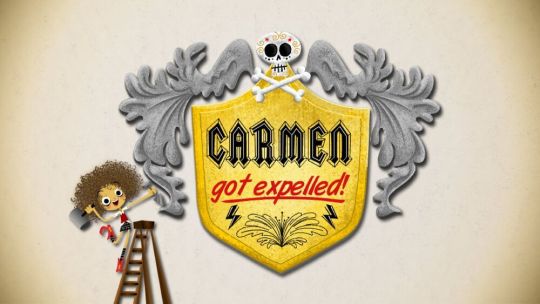
Carmen Got Expelled was created by Jorge R. Gutierrez and was pitched to Disney Television Animation.
The series follows a young girl named Carmen who was expelled from her last school from defending her classmates from a group of bullies. While it looks like Carmen will face punishment (for actually doing the right thing and being a good person), good - karma steps in the form of The Baron who enrolls Carmen in his private academy. Sadly, Headmistress Gnarly and her niece Yvonne try to do everything in their power to get Carmen in trouble and get her expelled for good. Luckily, Carmen has her friends Bing, Ozzy, and Johnny (*coughCRUSHcough*) to get her out of trouble!
The reason the show wasn't picked was because the network didn't think it would do well with audience and wanted Carmen's race to be changed and be a girl who loves rules. WOW, REALLY?!? I think if Jorge pitched the idea to Nickelodeon, it might have worked since his show El Tigre: The Adventures of Manny Rivera was already on that channel and would've made a good crossover.
After being rejected, Jorge worked on The Book of Life film that also was rejected for a while only to become a- SUCCESS!
PILOT, INFO
3. The Kitty Bobo Show
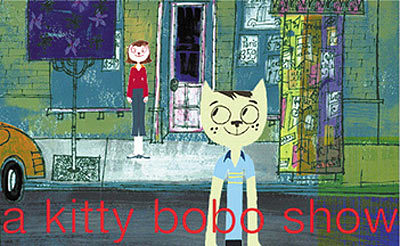
The Kitty Bobo Show was created by Kevin Kaliher & Meaghan Dunn and was pitched to Cartoon Network during their 2001 Big Pick competition where the viewers picked who would win. The winner became the classic show Codename: Kids Next Door!
The series focused on Kitty Bobo an anthropomorphic cat living in a big city along with other anthropomorphic animals and had it continued would've explored more of Kitty Bobo, his adoptive parents who are dogs, and his friends. In the pilot 'Cellphones' the plot was of Kitty Bobo trying to look cool and impress everyone with his new (now dated) cellphone.
The show is now a cult classic and had many petitions to become an actual show. Apparently, the creators want to continue the pilot from this Instagram post. If it does happen, I think it would work best teens/young adults on Adult Swim.
PILOT, INFO, 1
4.Princess Academy
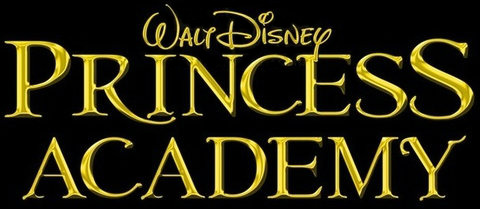
Princess Academy was created by Olivier Ciappa and David Kawena and was pitched to Disney. It was supposed to be an animated short that was also a musical not just featuring the famous Disney Princesses, but also many other female leads at a boarding school. Sadly, the project was canceled due to Disney getting rid of its 2-D animation department (another bad decision).
This is just an educated guess, but from the concept art a little girl got accept into the Princess Academy and got to interact with her favorite characters and at the end of the short more students would arrive and meet their favorite leading ladies.
Seeing how big the Disney Princess fandom is, I'm surprised this was passed up. I mean HELLO! You got all the Disney Princesses and the other female leads in one place, I think this would've been a success!
INFO, 1
5. Oswald the Lucky Rabbit the Series

Oswald the Lucky Rabbit the Series was planned to premier on Disney+ and had many announcements and people excited for the return of Oswald, only to be disappointed (AGAIN!) when news hit they weren't doing the show.
After, all poor Oswald has gone through: Walt losing custody over him in divorce court, abandoned, and forgotten; give the poor guy a break and let him have his show!
Despite all that Oswald has made cameos in Mickey Mouse shorts, The Wonderful World of Mickey Mouse, Once Upon A Studio, and his own short. There's still hope he'll join his brother again soon.
PILOT, INFO
6. Epic Mickey 3

After, the return of Oswald and success of Epic Mickey, there were plans for an Epic Mickey 3, but sadly never came.
This would've helped Oswald's popularity and maybe make Epic Mickey into a TV/movie series featuring the two brothers, but at this time that's wishful thinking.
INFO
7. Milky Way and the Galaxy Girls
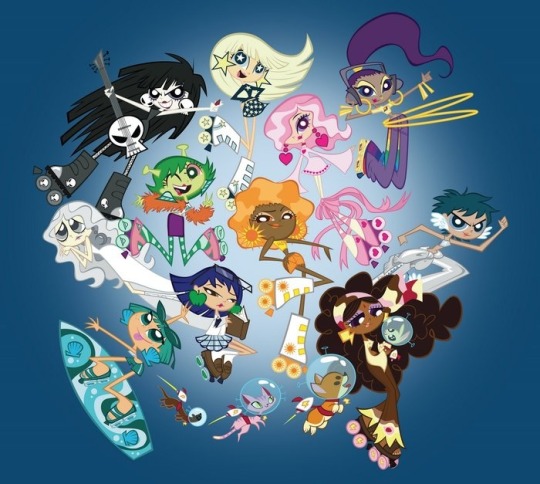
Created by Lauren Faust pitched to Hasbro.
The series would focus on eleven girls who are the personifications of planets. The pilot was about Milky Way accidently releasing the evil Black Hole and would meet the other girls to help fight. Sadly, it was passed over in favor of the popular My Little Pony: Friendship is Magic.
Lauren had ragdolls and a (now out of print) book released in hopes of making it a series, she even has some concept art on her Deviantart page.
Over time Lauren redesigned the girls so hopes and wishes that it becomes a series!
INFO, 1
8. Toil and Trouble
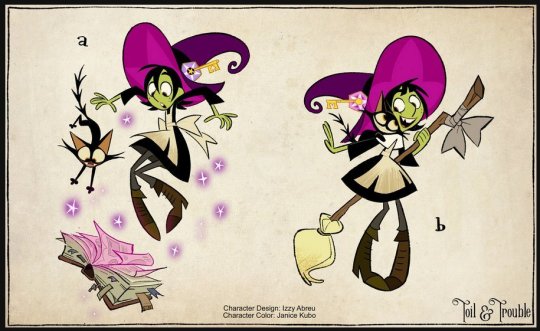
Created by Lauren Faust pitched to Netflix.
Lauren tried to pitch the series Toil and Trouble freaturing an orphan witch named Toil and her cat Trouble as they try to learn magic and save the witch world.
When, production for the project began Netflix decided to stop the show before it began.
SERIOUSLY, HOW DARE WHOEVER DECIDED TO CAN THIS SHOW DENY THE QUEEN HER RIGHT TO CREATE!
This so would've made a hit especially since Laurn worked on: The Powerpuff Girls, MLP:FIM, Kid Cosmic, Wander Over Yonder, and etc! But, not to worry y'all Lauren still has the rights and will most likely have it produced by someone else (hopefully)!
INFO, 1, 2, 3, 4, 5
9. Me and My Shadow

Me And My Shadow created by Maya Forbes & Wallace Wolodarsky and pitched to Dreamworks.
Me And My Shadow follows Daniel (human) and Dan (shadow) as they two work together to stop an evil shadow from staring an uprising against shadows and humans. Along the way Dan help Daniel gain some confidence and form a friendship.
THIS FILM HAD SO MUCH POTENTIAL!
It merged 2D & 3D animation, had an amazing story, a good cast of characters; what more could you want?
Sadly, it was passed over by other films and despite protest and a petition Dreamworks refused to budge.
Not only would this film bring back Dreamworks animation department and could've been a rise for 2D animation to come back!
INFO, 1, 2, 3, 4, 5
10. Bye Bye Bunny: A Looney Tunes Musical
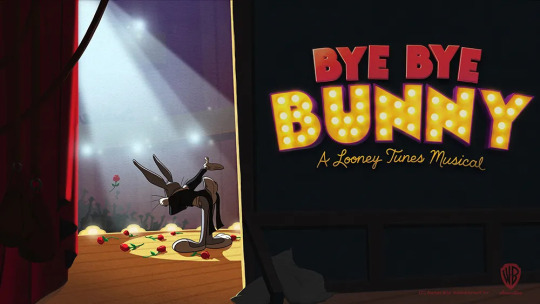
Bye Bye Bunny would be about Bugs Bunny tired of being in the spotlight and wanting the life of a regular bunny. This becomes Daffy's big break to step out of Bug's shadow and become a star only to be kidnapped by an obsessive fan of his (talk about irony). Bugs and the others go on an epic quest to save Daffy with hijanks, adventure, and heartfelt moments.
Sadly, the project was canceled which is a huge crime. The story was the perfect star wants to leave the spotlight, we could've seen more of Bugs and Daffy's friendship, and the song 'Why Do I Gotta Be Bugs Bunny' was just so heart wrenching beautiful. This would've been great to release during Warner Bros. 100 Anniversary and give the Looney Tunes franchise some more attention.
INFO, 1, 2
2. Shows messed up by the network but still had an ending
The Owl House
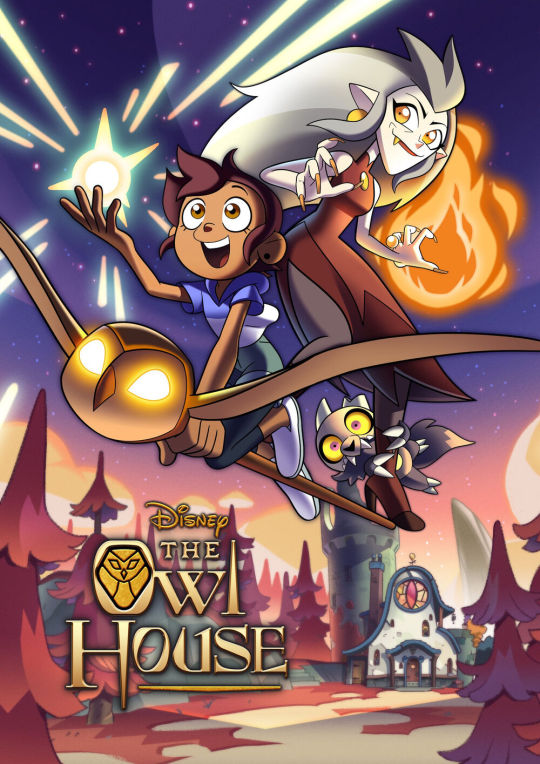
The Owl House created by Dana and aired on Disney.
The Owl House followed the story of Luz a teenage girl who has a love all things weird and magically gets sent to a 'normal' camp after one of her antics get her in trouble. But as fate intervened Luz stumbles upon the Boiling Isles and meets Eda the Owl Lady, King the king of demons, and Hooty the Owl House. To fulfill her dreams of becoming a witch Luz becomes Eda apprentice and explores the mysterious of the Boiling Isles.
The Owl House was a huge hit with fans and the LGBTQ community, and it bites that it was cancelled/shortened during season three. Dana had more ideas for season 3 for example: a beach episode, info on Hooty (don't lie we all want to know what Hooty is), and etc.
The reason the Owl House was canceled was because Disney exs didn't think it fit into their brand... What fit? They threw away a precious gemstone in the trash when they made that decision.
Dana Terrace, whatever your next project is I know it will be a success.
INFO, 1, 2,
2. Ducktales (2017)
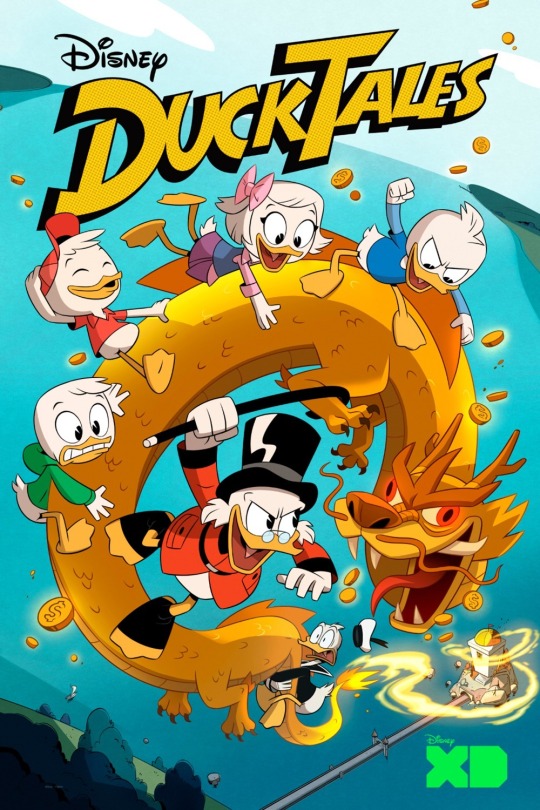
Ducktales (2017) created by Matt Youngberg & Francisco Angones and aired on Disney.
Ducktales follows Huey, Dewey, Louie, their friend Webby, uncle Donald, and great uncle Scrooge, as they go on epic adventures, find rare items & hidden worlds, and a long-lost family secret.
Ducktales had a great start and a huge fanbase, but sadly it wasn't getting the ratings Disney wanted, switching channels, and bad marketing.
I really wish this show continued and had each character have their own season, but it did have a good ending.
INFO
3. Danny Phantom
Danny Phantom created by Butch Hartman and aired on Nickelodeon.

Danny Phantom follows the story of Danny Fenton who gained ghosts powers after a freak accident. With his best friends Tucker and Sam, Danny uses his powers to protect everyone against evil ghosts, humans, and the horrors of high school. To make matters worse Danny has to keep his ghost identity a secret from his parents who are ghost hunters!
Despite the show's popularity it didn't reach the same goal as Fairly Oddparents or Spongebob (or so I'm told). Despite that Danny Phantom had an ending, but it was kinda a divide in the fandom.
It was said had the series continued: we'd find out more about the Ghost Zone, more characters, and most importantly: Danielle would've been adoptive by the Fentons!
4. The Amazing World of Gumball

The Amazing World of Gumball created by Ben Bocquelet and aired on Cartoon Network.
The Amazing World of Gumball follows the story of Gumball as he gets into random shenanigans in his town of Elmore along with his best friend/adoptive brother Darwin, and little sister Anais.
The show has been praised for its mixed media animation, humor, and storytelling. The last episode ended in a cliffhanger leaving many fans unsatisfied.
There were plans for a movie that Ben said would resolve the cliffhanger only for it to be shelved (along with other shows/movies) due to the HBO (HB -NO). I tried to find more information, but the only other information I found was that it 'might' still be in production and be bought by a different network. Again, I'm playing by ear.
INFO , 1, 2
5. Wander Over Yonder

Wander Over Yonder was created by Craig McCracken and aired on Disney.
Wander Over Yonder follows the story of a friendly alien nomad named Wander with his best friend and stead Sylvia travel all over the galaxy going from planet to planet. While on their journey they run into Lord Hater who wants to take over the galaxy.
Disney ended WOY after season 2 and there were plans for a season 3 and would've been the final season.
Craig had plans to expand the story that didn't happened (maybe even travel to Earth?); after WOY cancellation Craig went to work on Kid Cosmic for Netflix.
INFO, 1 , 2
6. Samurai Jack

Samurai Jack was created by Genndy Tartakovsky and aired on Cartoon Network.
Samauri Jack follows the story of a Samauri named Jack and his battle with the evil demon Aku. Before Jack can defeat Aku with his sword Aku uses his powers and sends Jack into the future where Aku is the ruler. Jack travels through many lands in his search to find a way to the past, fix the future, and defeat Aku!
The only problem with the final episode was it took - 13 YEARS - to finish! Adult Swim revived the series in 2017 giving the fans a satisfying ending.
Everyone originally thought that season four that ended in 2004 would end in a cliffhanger. I guess that if it did end around the early 2000's the ending would be different since Genndy and the crew would've had other ideas. I'm happy that the series had the ending it had, but let's be honest do we really want to wait so long for a proper ending?
3. Shows messed up by the network
Infinity Train

Infinity Train was created by Owen Dennis and aired on Cartoon Network.
Infinity Train was at first a mini-series that focused on Tulip a young girl who's dealing with the divorce of her parents decides to run away from home to escape her home life. Tulip ends up on the mysterious Infinity Train and meets a robotic creature known as One-One and a strange green glowing number on her hands. Knowing the longer she's on the train the more danger she's in Tulip, One-One, and Atticus the King of Corginia, travel throughout the train to find The Conductor and send Tulip on. Afterwards we see different passengers travel the train going through different types of traumas and learning to heal.
Despite Owen having a total of eight books ( book five being Ameila's backstory), a passenger being traumatized by the train only to return on it, and even a Christmas special, Infinity Train went to HBO Max streaming service, was canceled after book 4 because execs decided it wasn't fit for kids and became one of many victims of the 2022 HBO Purge.
After much protest from the TV/FILM community Infinity Train books 1 & 2 can now be purchased on DVD (not giving up on the other books) and downloaded from online stores.
Once again, a great show canceled and destroyed by corporate greed!
INFO, 1, 2,
2.Ever After High
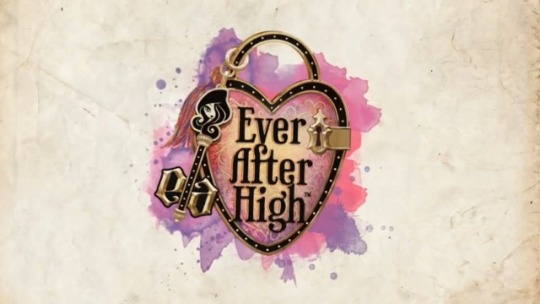
Ever After High was created by Mattel books by Shannon Hale & Suzanne Selfors.
Ever After High focus on the teenage sons & daughters (and non-binary) of legendary fairy tales. The children are sent to Ever After High School to learn how to follow the same steps as their parents. But Raven Queen the daughter of the Evil Queen, isn't evil and doesn't want to follow in her mother's footsteps. On the other hand, Apple White the daughter of Snow White wants to follow in her mother's footsteps and be the perfect queen. This divides the school into two separate parties: the Royals (those who want to follow their predetermined destinies) and the Rebels (those who want to rewrite their stories) and causes a shift in the fairy tale world.
Being a toy line Ever After High relied on their doll sells to fuel the books and web series. After Disney's Descendants release Mattel knew they couldn't compete, ending the Royal/Rebel debate too early, and cheaper doll lines the series was canceled.
There were plans for more dolls, books, and sadly characters that have been seen since the beginning never got dolls.
In my honest opinion they shouldn't have ended the Royal/Rebel debate in Way Too Wonderland, that's more of a final season kinda thing and it's hard to come up with more stories after jumping the shark like that.
INFO, 1, 2
3.Star Darlings

Star Darlings was created by Shana Muldoon Zappa and Ahmet Zappa.
Star Darlings was a book and miniseries focused on twelve Starling girls (humanoid creatures who live on Starland) who attend the prodigies Starling Academy to learn to grant wishlings (humans) wishes only to find out they are the legendary Star Darlings destined to save their world and Wish World (Earth) from negative energy!
Honestly Star Darlings was a victim of bad advertising and Disney no giving it enough attention. The books had so much information on the characters, lore, and etc. while the cartoon only had shorts and was on random times. The cartoon had an ending, but the books were left on a cliffhanger.
INFO
4. Super Best Friends Forever/ DC Super Hero Girls (2019)
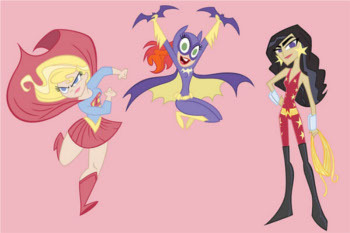
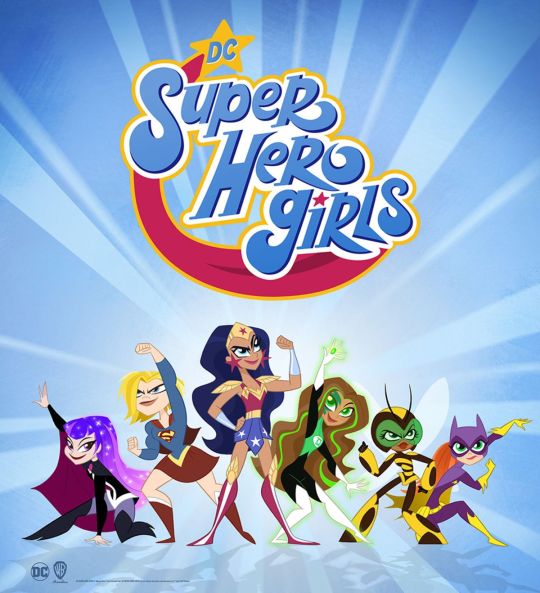
Created by Lauren Frost and aired on Cartoon Network.
I'm listing this as a two-parter.
Super Best Friends Forever was a series of shorts featuring Batgirl, Wonder Girl, and Supergirl, three superhero teens fighting crime and getting into hilarious hi-jinks.
Lauren was denied turning SBFF into a series due to marketing.
In 2019 Lauren would later do the second installment of DC Super Hero Girls another group of superhero girls who battle the evils of high school and Metropolis.
Many fans argued which version is superior.
To be honest I wish Donna wasn't replaced with Diana, Diana and Zatanna weren't de-aged along with a bunch of other adult characters, the adult heroes were mentors to the girls, could've added more teen heroes that still haven't made their TV debut, not make the guys jerks/useless, and the setting wasn't just in Metropolis. But that's just my two cents.
INFO, 1, 2, 3, 4
5. RWBY & Camp Camp
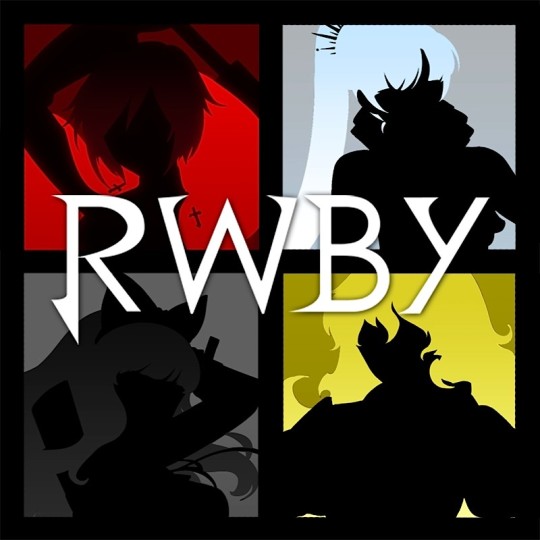

RWBY created by Monty Oum & Camp Camp created by Miles Luna and Jordan Cwierz both aired on Rooster Teeth.
RWBY story is about the four members of Team RWBY (Ruby, Weiss, Blake, and Yang) who attend Beacon Academy to become huntsmen and huntswomen to protect the world from evil creatures known as Grimm, but as the series progresses, we learn more about the characters, lore, and world of Remnant.
Camp Camp focuses on campers (Max, Nikki, and Neil) & camp counselors (David and Gwen) who attend a shady & dysfunctional run-down camp known as, Camp Campbell. Instead of a traditional camp like space camp, sports camp, or adventure camp, Camp Campbell combines them all to save cost and avoid being sued.
While I was at school my art teacher told the class that a famous artist had died from an allergic reaction, but she neglected to tell who the artist was. Later on, I found out about RWBY and Camp Camp and while digging into the shows' history/ creators I realized Monty Oum was the artist my teacher was talking about.
Due to Rooster Teeth shutting down both series futures are in the air. I was lucky enough to meet Michael and Lindsey Jones the voice actors from RWBY and Camp Camp & a cool Oscar cosplayer LINK. I overheard him asking them when the next season for each show would come out, both replied that "I can't promise anything.", and that scared me a little. I really hope new seasons come out soon since I would hate for both series to go.
INFO, 1
6. Invader Zim
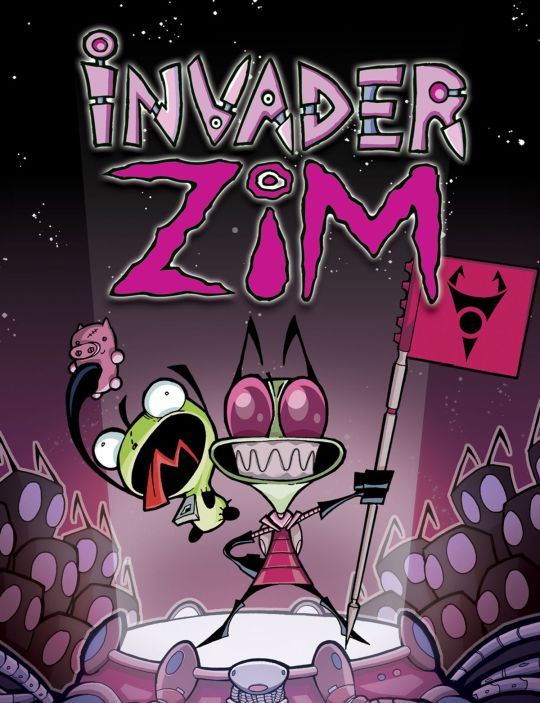
Invader Zim created by Jhonen Vasquez and aired on Nickelodeon.
Invader Zim focused on an Invader named Zim of the Irken Empire who wants to impress his leaders, The Tallest, after failing Operation Impending DOOM 1 after he destroyed his own planet. The Tallest give him a snipe hunt by sending him to the planet Earth. On Earth Zim disguises as a normal *HA* human boy and his SIR unit named Gir as an adorable green dog as they collect info on the planet to conquer it. Unfortunately, Zim forms a rivalry with a junior paranormal investigator named Dib who tries to prove to everyone that Zim is an evil alien.
The show was very popular at the time even having merchandise still being produced to this day. The reason for the shows cancellation was due to low rating and high costs even though there were many unaired episodes.
In 2015 Invader Zim continued as a comic book series and in 2019 Netflix aired Invader Zim: Enter the Florpus. Invader Zim doesn't really have a true ending, so I guess either the comic book ending or Enter the Florpus could count as an ending, maybe?
INFO, 1,
7. Dead End: Paranormal Park

Dead End: Paranormal Park was created by Hamish Steele and aired on Netflix.
Dead End first appeared in a Cartoon Hangover short in 2014 and later became the book series in 2018.
Book and TV show follow the story of Barney, Norma, Pugsley, and Courtney who work at Phoenix Parks a haunted theme park where they battle demons, find out the mystery behind the park owner Paulina Phoenix, and maybe stop the apocalypse!
Dead End: Paranormal Park was not renewed by Netflix due to budget cuts (really, I mean really?) and Hamish planned to have the third season air on a different streaming network. While the cartoon ended with a cliffhanger the book series had an ending.
INFO, 1
8. Detentionaire
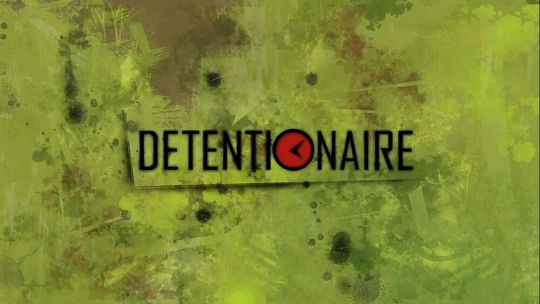
Detentionaire was created by Daniel Bryan Franklin & Charles Johnston and aired on Teleton.
Detentionaire follows the story of Lee Ping who has pulled off the most epic prank in A. Nigma High history, but there's just one tiny problem - Lee didn't do it! Framed for a prank he didn't commit Lee has to spend a year in detention (and grounded), determined to find out who pranked him and why Lee teams up with Biffy another detentionaire and his friends to get down to what's going on and darker secrets at A. Nigma High.
Due to low ratings and not too much viewership the show ended on a cliffhanger.
I came across Detentionaire while watching Ruby Gloom on YouTube (I live in the US so there were no channels featuring the shows) lucky for me it was in the middle of season one when it was still on air and I got to watch the series (when uploaded to Youtube).
LINK
9. Sym- Bionic Titan/ Unicorn: Warriors Eternal
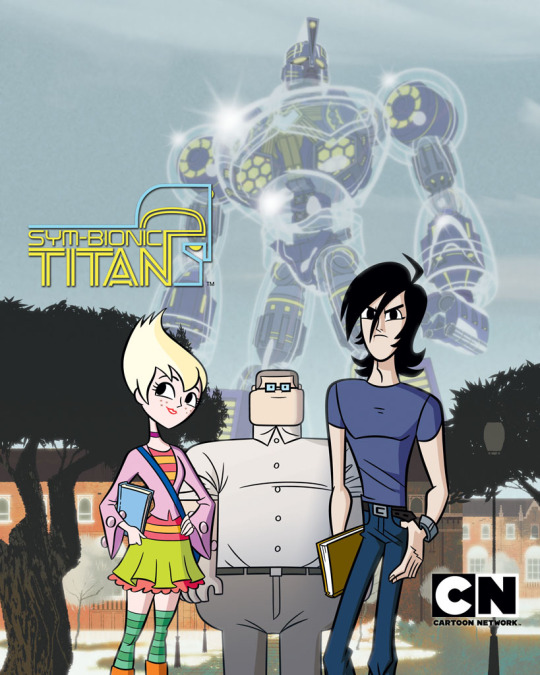
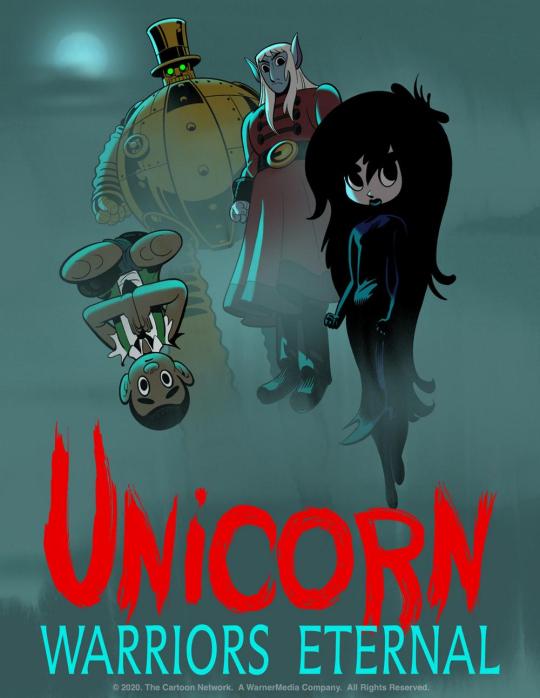
Sym- Bionic Titan/ Unicorn: Warriors Eternal created by Genndy Tartakovsky and aired on Cartoon Network.
I'm listing this as a two-parter too.
Sym-Bionic Titan focuses on Princess Ilana, Soldier Lance, and Advance Robot Octus who had to flee their home planet Galaluna when the evil General Modula. General Modula sends out monsters to kill Princess Ilana and destroy the royal Galaluna bloodline once and for all! When, the three combine they form Sym-Bionic Titan to battle the monsters. The three blend into Earth culture by pretending to be a family, owning a home, and going to high school to draw suspicion off them. On top of that two government parties are investigating them and their relationship to the Titan. As the three protect their new home they are trying to find a way to return to Galaluna.
I'll be honest I'm not a huge sci-fi fan, but I did enjoy the series during its run. The story and art style were amazing as well.
The reason Sym-Bionic Titan was cancelled was because it was unable to secure a toy license. Oh please, there's a bunch of shows without a toy line and they ran/ or still running. The series ended with a 'ray of hope ending' after production Genndy left Cartoon Network and began working on other projects.
Only to return in the form of Unicorn: Warriors Eternal which focus on four individuals who are the reincarnations of past warriors sent to fight an ancient evil from plaguing the world.
The series had a good old timey animation art style with the steampunk aesthetic. Sadly, it like its sibling series ended on a cliffhanger.
INFO, INFO
10. Justice League Action
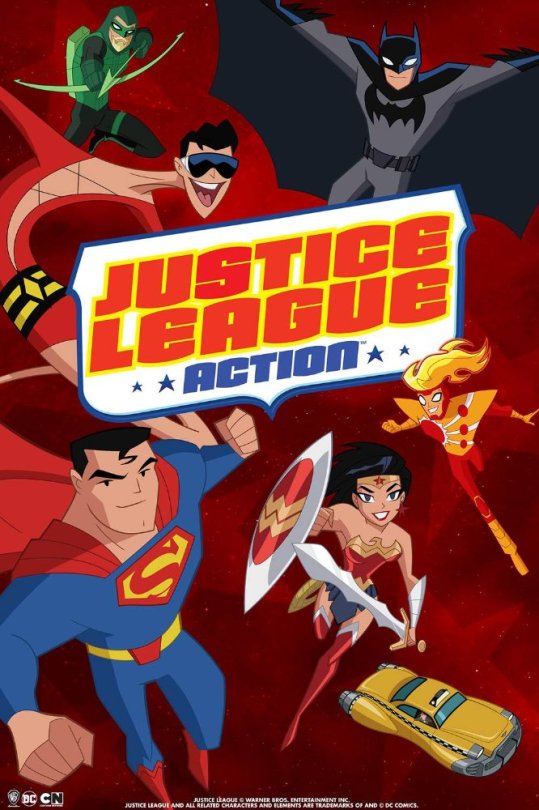
Justice League Action created by Sam Register, Butch Lukic, Alan Burnett, and Jim Krieg.
Justice League Action focused on the Justice League a team of superheroes protect the world from supervillains. Each episode featured a different set of heroes defeating their foe and giving everyone extra screentime.
Justice League Action had a special when it first came out only to get bad timeslots and was never renewed.
INFO, 1
10. Teen Titans
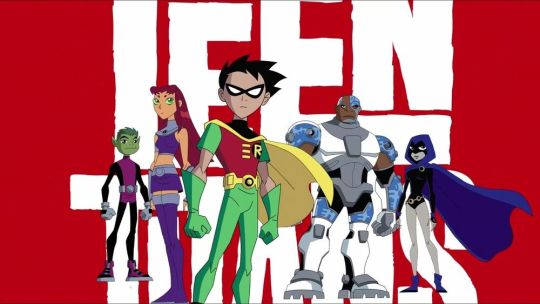
Teen Titans was created by Glen Murakami & David Slack and aired on Cartoon Network.
The series focused on five superhero teens known as the Teen Titans who battle evil villains both in their home of Jump City and the Earth. Their biggest threat being Slade (Deathstroke in the comics) a mysterious man bent on conquering Jump City & destroying the Teen Titans,
Teen Titans was one of Cartoon Network's successful cartoons with high praise from critics and fans it's a mystery why the show was canceled. Once fans found out that Teen Titans was threatened to be canceled there were protests to see it not happened. The reasons for the cancellation ranged from low ratings, decline in toy sales, wanting to work on other shows, and etc. I believe the show was cancelled was because the execs could (JERKS!).
There have been spin-offs of the series such as the 'Titans in Tokyo' film to act as "the ending" of the series, DC nation Teen Titans shorts, and (the infamous) Teen Titans Go series that has had many specials, a movie, and is still on air.
The things I wish that could happen in the show are: Wonder Girl was a member of the team to even the gender out (I hate that even to this day shows only have 1 or 2 girls on a team), the second season Terra still appeared but it was Wonder Girl's season (to give Terra more screen time and make the betrayal hurt more) than third would be Terra's and every season would go on as normal, Starfire having a season, and the finale season focused on everyone! But that's just my two cents.
There have been rumors of season six (maybe) happening. I mean Samurai Jack and Invader Zim came back after their cancellations. If Teen Titans were to return, it would be on Adult Swim.
INFO, 1, 2,
Conclusion:
Okay, and we're done.
To be honest the reason I made this post is because I want to pursue a career in writing, animation, and voice acting.
After the news of HBO's purge and many others, I had a major panic attack because if one greedy person could make the call to erase years and dreams of hard work no matter how popular the shows are or well known the creators are what chance did I have?
I have auditioned for many things only to be in 'always the bridesmaid never the bride' position so it gets heartbreaking after a while. But, with indie works such as The Amazing Digital Circus, Murder Drones, Spooky Month, The Art of Murder, and Puzzle & Sling: Boredom Killers getting recognized and receiving high praise it kinda gives me a spark of hope despite everything.
Thank you for taking the time to read my article. Bye y'all!
Special mentions: The Prodigal Son (FOX), The Summoning (Cartoon Hangover), Super Robot Monkey Team Hyperforce Go! (Disney) Welcome to Doozy (Cartoon Hangover), Victor and Valentino (Cartoon Network), The Cuphead Show (Netflix), Class of 3000 (Cartoon Network), Cartoon Saloon version of Winnie the Pooh, and etc (like I said before you can add to the list).
#my art#the modifyers#carmen got expelled#the kitty bobo show#princess academy#oswald the lucky rabbit series#oswald the lucky rabbit#epic mickey#milky way and the galaxy girls#toil and trouble#me and my shadow#dreamworks me and my shadow#bye bye bunny: a looney tunes musical#the owl house#ducktales#ducktales 2017#danny phantom#the amazing world of gumball#wander over yonder#samurai jack#infinity train#ever after high#star darlings#super best friends forever#dc super hero girls#invader zim#dead end paranormal park#rwby#teen titans#camp camp
75 notes
·
View notes
Note
Nefretiti
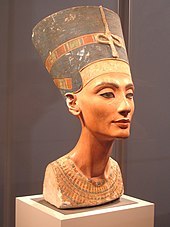
Neferneferuaten Nefertiti, or Nofretiti, (14th century BC; 18th dynasty, New Kingdom) is perhaps best well known for her bust, which has become world famous for its' uniqueness and craftsmanship. But Nefertiti played a role in one of the most controversial eras of Egyptian history. She is one of the most well-recorded Queens of ancient Egypt, but very little is known about her actual life besides conjecture.
Let's start with dissecting her name. Most people will divide her name up into the words Nefer and Titi; Nefer being a common word in ancient Egypt meaning beauty and goodness. In actuality, her name is divided up as neferet - iiti, more classically transliterated as Nfr.t-jy.tj. The t belongs to nefer as it is the denomination of a female pronoun in the ancient Egyptian language, and the jy.tj means coming or has come. All together, her name means The Beautiful One Has Come.
Nefertiti is indeed beautiful; she is, as mentioned earlier, one of the most depicted Queens of Egyptian history, with her image appearing on a great number of walls, in carvings and in paintings, and of course, statues. The reason for this is partly due to her marriage to the Heretic Pharaoh, Akhenaten. To understand this connection a little better, one must have some background about the Pharaoh Akhenaten.
Akhenaten and Nefertiti were married close to when Akhenaten was coronated, which was for him around the age of 16 or 18, and for Nefertiti was around the age of 12 to 16. Akhenaten is fairly well known Pharaoh. His controversial history has made sure of that, despite the fact that after he died, the following Pharaohs did everything in their power to rid Egypt of his memory by destroying his city and erasing all images of him. Akhenaten started off as Amenhotep IV––a name which connects him to the Egyptian God Amun, often associated with the sun, but representing hiddenness, and one of the highest and most powerful Gods of Egypt. The cult of Amun at the time of the New Kingdom was perhaps the most widespread cult of worship in Egypt, and the 18th dynasty, to which the Pharaoh Amenhotep IV belongs, is the first dynasty of the New Kingdom.
This was, apparently, unsatisfactory for the Pharaoh Amenhotep IV. Still, for the first 5 years of his reign, he followed Amun's cult, until he made a dramatic religious change to worship of the Aten; a new God that represented the sun disc. Aten was a faceless God, and the first mention of the word aten was in the Old Kingdom, and back then, it meant 'disc'. While Aten was worshipped as a mere aspect of Ra, the Sun God, in Amenhopte IV's father's (Amenhotep III) reign, Amenhotep IV decided that the Aten should be the primary deity worshipped. Amenhotep IV changed his name to Akhenaten, and worshipped the Aten above all else, as the nurturer of the world, the creator, and the giver of life. This would've likely been fine; however, Akhenaten decided that the Aten should be the only God worshipped, and banned the worship of all other Gods.
Ancient Egypt had been polytheistic since it's very earliest beginnings. Akhenaten essentially introduced monotheism out of nowhere and insisted all his subjects follow him in his new faith, outlawing all other worships, and forcing many priests to abandon the temples of other Gods. Additionally, ancient Egyptians were very accustomed to using an image to worship a God; the image usually being an animal, human, or an animal-headed human. But the Aten was a disc. Although the Aten had been worshipped in Amenhotep III's reign as a falcon-headed solar deity, Akhenaten insisted that the Aten be only shown as a disc with rays reaching out, with small hands on each ray.
Obviously, this caused a lot of dissent in Egypt and the following reigns.
Another interesting point of contention was the fashion in which the Aten interacted with the royal family. In the past, the Pharaoh was connected to the Gods more than any other human––he was the bridge between the two worlds, and the mediator between humanity and the Gods. This was, generally, not a task shared by the whole of the royal family. But in Atenism, the Aten would only shine its life-giving rays onto the Pharaoh and his royal wife; in this case, Akhenaten and Nefertiti. Thus the people, if they wanted to experience the life and love of the only, legally worshippable God, would have to go through the Pharaoh and his wife. This power would've likely, at least in part, been given to the royal family in order to cement their changes, and protect them from any backlash.
This massive change in culture and religion had great affects on ancient Egypt at the time. The style of ancient Egyptian art changed drastically, and the figures of the royal family were now represented as sinuous and gangly, often with large, sagging bellies and breasts, and curved, graceful facial features. Since Akhenaten and Nefertiti, as the royal family, were so important to this new religion of Atenism, the two of them were depicted in a number of scenes––many of them unique to the Amarna period, which is the name for the period in which Atenism was installed. These scenes were familial in nature; depicting the royal couple sitting with their children and bathing in Aten's life-light, throwing gifts down to the people, and engaging with one another. This is one of the main reasons that Nefertiti is the most widely-depicted Queen of Egypt. Not only is she depicted often as the wife of Akhenaten, but she is drawn in her own right––she makes offerings to the Aten on her own, and there are depictions of her smiting the enemies of Egypt, which is a role traditionally given solely to the Pharaoh.
Another piece of evidence for the high status of Nefertiti comes from this famous depiction of the royal Amarna family:

Here, Nefertiti sits on the right side, opposite her husband, Akhenaten. Akhenaten is holding up one of his children, and Nefertiti holds another two children; three of the six daughters that Nefertiti would bear for Akhenaten. The children are depicted in an almost grotesque, alien fashion, though it's not something you can really fault the artists for; it took a long time for artists across the world to realize that babies are not, in fact, just tiny humans, and that their proportions are different. Still, the style of the Amarna period is not helpful; with their large, oval heads, thin limbs, and sagging stomachs, it is difficult to imagine that anyone could be traditionally, Egyptian beautiful. Yet there is still a strange beauty to it; the sagging bellies are meant to call to mind Hapi, a God of great fertility, and the artist's ability to capture the facial features and emotions of their subject is amplified by this new and forgiving artstyle.
This image is a house altar. What that means is that people were encouraged, and evidentially did, worship the royal family in their homes, which is somewhat unprecedented. House altars were usually for Gods such as Tawaret and Bes, who were protectors of the household. But now, with traditional Egyptian religion banned, the typical house altar was now a shrine to Akhenaten and Nefertiti, and by extension, their children, which again shows the importance and power bestowed upon not just the Pharaoh, but his wife as well, as the two are represented in equal size.
Another interesting note about this particular house altar is the thrones on which Akhenaten and Nefertiti are seated. While Akhenaten's seat is mostly blank, Nefertiti is seated upon a throne reserved only for Pharaohs, the reason for this being the decorations which depict the Sema-Tawy ritual; the conjoining of the two lands.
Some time during the course of Akhenaten's reign, he decided to move the capital of Egypt to a deserted stretch of land along the Nile Valley, and called the new city Amarna, for which the period was named after. Here, the royal family took up residence, and this is where the cult center of the Aten would carry out its worship. This is also where Akhenaten royally screwed up his duties in foreign diplomacy, but that is a story for another day.
Before moving to Amarna, Nefertiti had three daughters in Thebes, the previous capital, and three more daughters in Amarna. In order, her daughter's names were Meritaten, Meketaten, and Ankhesenpaaten; then in Amarna, Neferneferuaten Tasherit, Neferneferure, and the youngest, Setepenre. It was to a lesser wife of Akhenaten's that the famous boy Pharaoh Tutankhamun was born, and originally, his name was Tutankhaten.
During his reign, when concerning Nefertiti, Akhenaten placed special attention upon her and loved her dearly, which is why she was one of the most powerful Queens of Egypt. Akhenaten described her as "possessed of charm" and "sweet of love", that "one is happy to hear her voice," and that "contents the Aten with her sweet voice". The two husband and wife were rarely depicted separately, and Akhenaten gave Nefertiti the title of 'heiress', although she was not the daughter of a King. Instead, what many scholars believe Akhenaten meant by this, was that she was to be his successor.
After Akhenaten's death, two Pharaohs ruled for a short time before Tutankhamun took over, and one of those Pharaohs is believed to have possibly been Nefertiti under the name of Neferneferuaten, which means beautiful is the beauty of the Aten. It is still debated whether this was in fact Nefertiti, but given that Nefertiti had given herself the name Neferneferuaten far before Akhenaten's death, and the elvated status gifted by her husband, it seems somewhat likely.
In essence, due to the circumstances of her life and her husband, Nefertiti was elevated to a status that never came before or after her life. Women in ancient Egypt were awarded the same rights as a man, but the wife of the Pharaoh was never depicted as equal to the Pharaoh in such a fashion, as being Pharaoh meant being the intermediary between the heavenly and the earthly, and was a special accorded honour. Nefertiti, perhaps due in part to her charisma and beauty, was given a position equal to the Pharaoh, which never happened unless it was a woman who was becoming Pharaoh. As controversial as Akhenaten's reign was, he did love his wife greatly.
I want to share my opinion on this subject a little, which is essentially to say, that I don't like Akhenaten and I don't try to hide it. His worship of the Aten is alright, but it is the banning of all other worship which rests very uneasily in me. That being said, there is a good source which goes more into detail about Nefertiti, and it is very pro-Akhenaten and anti-ancient Egyptian religion, instead glorifying the monotheism of Atenism and such. Still, it is a valuable resource; Nefertiti and Cleopatra: Queen-monarchs of Ancient Egypt, by Julia Samson, and can be found on Internet Archive here.
131 notes
·
View notes
Text

In 1994, the Muppets made one of their most bizarre films to date.
An adaptation of Goncharov, a cult classic that languished in obscurity until the 2020s. While the film was referred to internally and in public reviews of the film as "The Muppets of Naples", the actual marketing of the movie instead titled it after its main lead: "Gonzorov". This was one of many enigmatic choices made by the production crew, and has never been elaborated on by the cast or crew. The film was a gigantic flop for multiple reasons, but most agree that the source of the troubles stems from the nature of Goncharov as a tragedy and a generally depressing movie to watch.
Reportedly, conflicts among the writing staff began almost immediately due to being unable to decide on which cut of Goncharov to base the film on. Eventually, however, director Brian Henson put his foot down and forced the writers to adapt the Ambrosini Cut. Generally agreed to be a less depressing movie than the Morelli Cut, it was expected that "Gonzorov" should have been a much more entertaining and narratively adept movie than it was. As the Muppets proved just two years later in "Muppet Treasure Island", they are very capable of handling otherwise dramatic material with aplomb. This leaves the question of why this movie was such a flop.
To quote Kermit the Frog during the interviews after the cinema debut, the movie was allegedly emotionally draining for the crew to adapt. "You know, we have a script. Mostly. But we do a lot of improv too. I'd wager it's about 60% script, 40% improv on a good day of filming. But, uh… We just weren't feeling it with this one, you know? We watched the original, and… Boy, it's really sad. Goncharov's just kind of a lonely guy trying to make himself a life. And it's not a good life, but it's his to own, and it ultimately kinda falls apart. Gonzo tried to make the role his own, but I think we all realised that we couldn't really make a joke out of the movie in the way that we wanted to."
The Muppets were skillful enough to change the genre to an absurdist tragicomedy, a film where the tragic and meaningless cycle of violence is paradoxically played for laughter. However, despite this, the film is well-known for its bizarrely melancholy air and almost hopeless atmosphere. Everybody seems thoroughly certain that their improv will have little to no impact on the film as a whole, creating a strange and compelling meta-narrative where not even the actors themselves can escape the almost gravitational pull of the ticking clock. Their characters will die, and any attempts to joke their way out of it comes off as desperate, almost deluded in a sense.
The original Goncharov held a deep fascination with inevitability. Clocks are the primary theme, though it appears in other forms. It is this same inevitability that strangles the Muppets, their impressive comedic skills held captive by their own belief that the narrative is inescapable.
Of particular note is the bridge scene, wherein Gonzorov and Katya (played by the dazzling Miss Piggy) discuss the slow collapse of the Italian mafia. The original Goncharov scene had Goncharov desperately trying to hold things together, even as they slipped through his fingers, but here… Gonzorov realises that it's pointless. He can't fix it, but at the same time he can't let it go. He begs Katya to shoot him. Cut to the chase. She's going to shoot him anyway, that's how the movie ends, right? Might as well go out on his own terms. But this horrifies Katya, and she throws her gun away, accidentally saving Gonzorov in the process.
This adds a new layer to the themes of inevitability that Goncharov is wrapped up in, and it's this: Inevitability goes both ways. You're going to die, but only when you're meant to. You don't get lucky. You don't have accidents. Inevitability is a ticking clock, but that countdown is a safety net. As long as you can still hear that clock ticking down, it means you've stitll got time to burn. When a bomb is counting down, just five minutes until it detonates, you do everything you can to buy yourself more time on the clock. Even if all your effort only gains you an extra second, that's what you have to do, right? A single second is worth the blood of innocent men.
But again, inevitability. That second you earned cost you minutes, cost hours days weeks months years. The clock WILL run out.
[read more]
79 notes
·
View notes
Text
Consulting the convoluted history of supernatural foxes, or why is Tsukasa like that

I know I said you should only expect one long Touhou-themed research article per month, and that the next one will be focused on Ten Desires, but due to unforeseen circumstances a bonus one jumped into the queue. For this reason, you will unexpectedly have the opportunity to learn more about the historical and religious context of the belief in kuda-gitsune, or “tube foxes”, as well as their various forerunners. Tsukasa is clearly topical thanks to Unfinished Dream of All Living Ghost, and I basically skipped covering Unconnected Marketeers in 2021 save for pointing out some banal tidbits, so I hope this is a welcome surprise. The post contains spoilers for the new game, obviously.
Obviously, in order to properly cover the kuda-gitsune, it is necessary to start with a short history of foxes in Japanese culture through history, especially in esoteric Buddhism. Early history: the Chinese background Early Japanese sources pertaining to foxes show strong Chinese influence. There was an extensive preexisting system of fox beliefs to draw from in continental literature, dating back at least to the Han dynasty (note that while the well known story of Daji is set much earlier, its modern form only really goes back to the Song dynasty). This is way too complex of a topic to discuss here in full, sadly, so I will limit myself to the particularly interesting tidbits.

A multi-tailed fox in the classic Chinese encyclopedia Gujin Tushu Jicheng (wikimedia commons)
It will suffice to say that historically the fox was perceived in China as a liminal being, and could be associated with pursuits regarded as ethically dubious, ranging from theft and banditry to instigating rebellions and promoting divisive religious views (so, for example during the reigns of firmly pro-Taoist emperors, Buddhist monks could be associated with foxes). Literary texts focused on supernatural foxes emphasized their shapeshifting abilities. In contrast with some of the other well attested supernatural beings in Chinese tradition, they could take a range of human forms, appearing as men and women of virtually any age. Often they favored mimicking people who lived on the margins of society, like bandits, courtesans or migrant laborers. It was also emphasized that they displayed a considerable degree of disregard for authority. The fact these animals lived essentially alongside humans without being domesticated definitely played a role in the formation of this image.
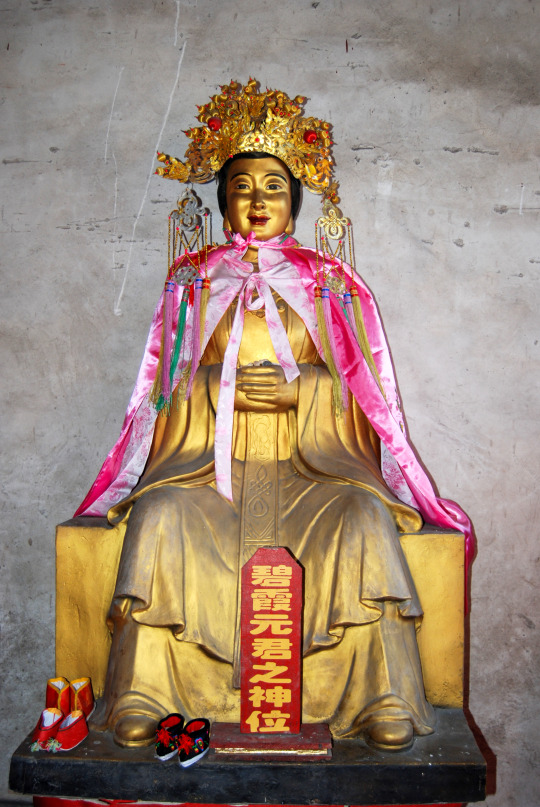
A contemporary statue of Bixia, a deity in the past associated with fox beliefs (wikimedia commons)
At the same time, foxes enjoyed a degree of popularity as objects of semi-official cult, still practiced here and there in China in modern times, for example in Boluo in Shaanxi. The religious role of foxes was reflected in, among other things, the development of terms like hushen (狐神) “fox deity”, or huxian (狐仙), “fox immortal”. The belief in such “celestial foxes” (tianhu, 天狐) was relatively common, and there is even a legend according to which there was a formalized way for the animals to transcend to higher states of existence, with the goddess Bixia making them undergo the supernatural fox version of the well known imperial examinations. If they failed they were condemned to live as “wild foxes” (yehu, 野狐) with no hope of transcendence. There are also accounts of foxes pursuing the status of a xian through illicit means, through a combination of praying to the Big Dipper and draining people’s energy, as documented by He Xiu in the 1700s. Note foxes were already portrayed as worshiping the Big Dipper during the reign of the Tang dynasty, but back then it was only believed this let them transform into humans.
The ambiguity of foxes is evident in the Japanese perception of these animals too. Supernatural foxes are probably among the best known youkai, and especially considering this is a post about Touhou I do not think the basics need to be discussed in much detail. They were believed to shapeshift and to steal vital energy, much like in China. Their positive role as messengers of Inari, a kami associated with agriculture, is generally well known too. The earliest sources documenting encounters with supernatural foxes are obviously, as expected, the earliest chronicles like the Nihon Shoki, where they mostly appear as omens. By the Heian period these animals are well established in the written record. For instance, Nakatomi Harae Kunge includes “evil magic due to heavenly and earthly foxes” among phenomena which require ritual purification. In addition to the tales imported from China being in circulation, some setsuwa written in Japan involved shape shifting foxes. However, supernatural foxes only gained greater prominence in the Japanese middle ages due to the growth of relevance of two deities they were associated with, Inari and Dakiniten. The latter is more relevant to the topic of this article.
Foxes, Dakiniten and tengu
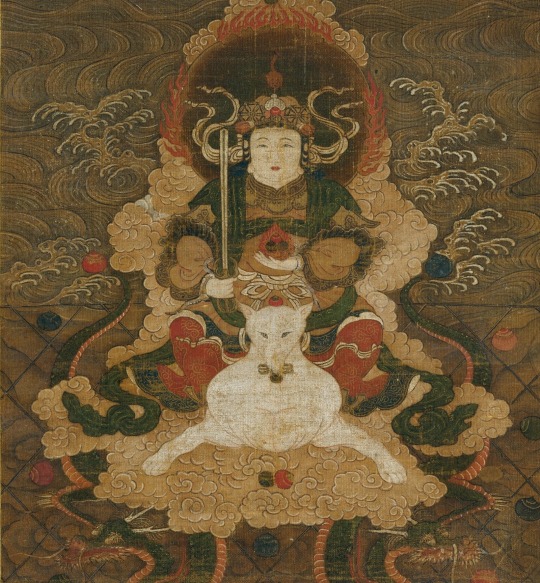
Part of a hanging scroll depicting Dakiniten riding on a fox (wikimedia commons, via MET; cropped for the ease of viewing)
The connection between foxes and Dakiniten reflected their associations with the dakinis, a class of demons in Buddhism. Originally the dakinis were associated with jackals instead, but Chinese Buddhist authors presumed that the animal mentioned in this context is basically identicial with more familiar foxes, and that belief reached Japan as well. It was strong enough for Dakinite, the dakini par excellence, to be regularly depicted riding on the back of a fox. Dakiniten was originally a regular dakini, according to Bernard Faure specifically one who appears in Heian period Enmaten mandalas (Enmaten is related to but not quite the same as the better known king Enma, for the development of two distinct reflections of Yama in Buddhism see here). However, she eventually developed into a full blown deva in her own right, and her prominence was so great that it basically resulted in the decline of references to the generic dakinis in Buddhist literature in Japan. She was particularly popular in the Shingon school of Buddhism, and at the peak of her relevance played a role in royal ascension rituals, developing a connection with Amaterasu in the process (Amaterasu acquired many peculiar connections through the Japanese middle ages, it was par the course). A Tendai treatise equates her with Matarajin instead, though. An interesting phenomenon related to Dakiniten is the occasional fusion of beliefs pertaining to foxes and tengu, which might have originated in the similarity of the terms tengu and the Japanese term for the already mentioned “heavenly foxes”, tenko. Its best attested examples include the inclusion of tengu in mandalas focused on Dakiniten as her acolytes. However, a different deity ultimately exemplifies this even better. Iizuna Gongen and "iizuna magic"
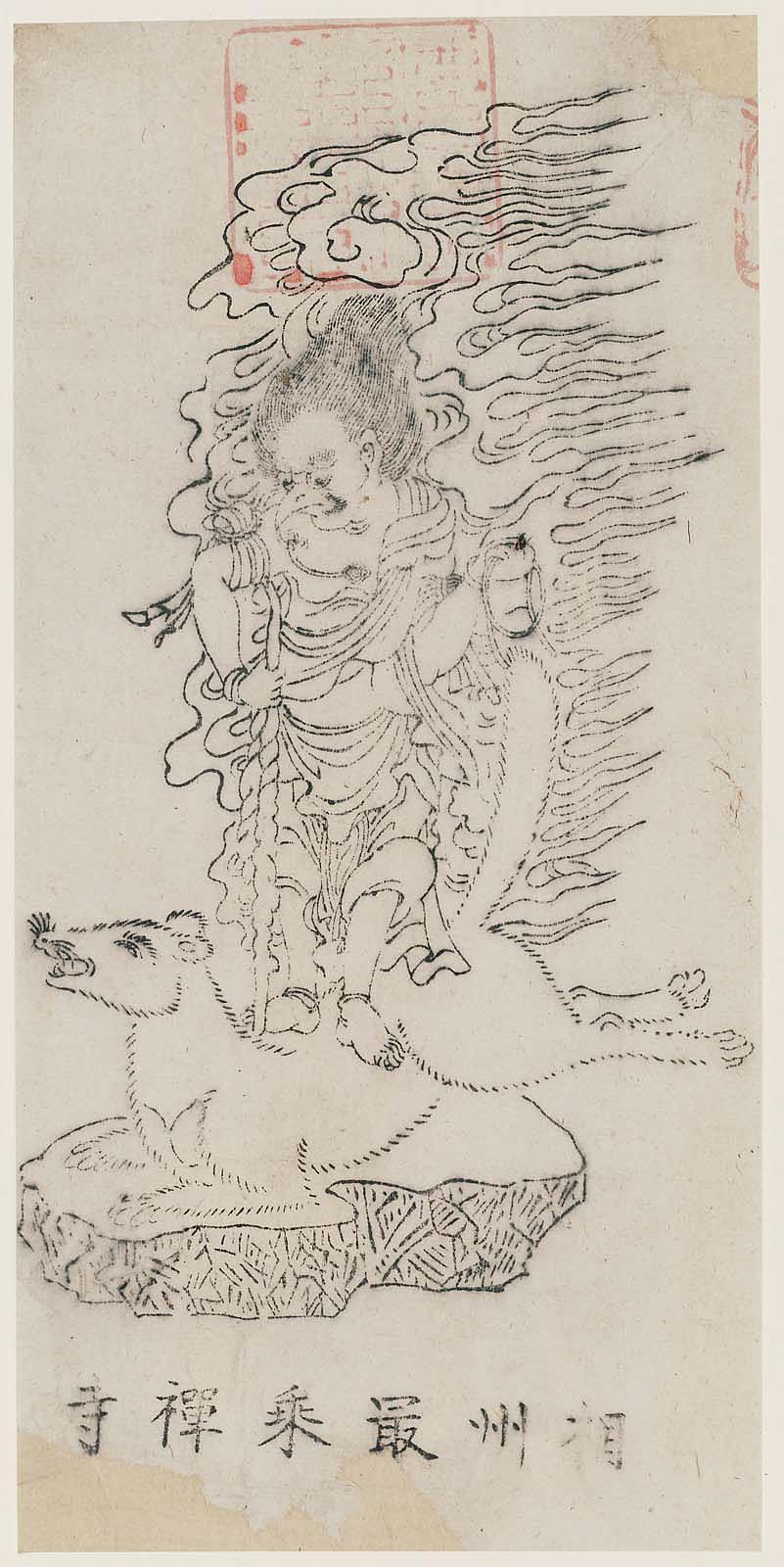
Iizuna Gongen riding on the back of a fox (Museum of Fine Arts Boston; link to the source is temporarily dead, the image is reproduced here for educational purposes only)
The indisputable center of the network of connections between foxes and tengu is Iizuna Gongen (飯綱権現), depicted as a tengu riding on a fox. As you can probably guess, he was a (vague) basis for Megumu, as evidenced by the similarity of the names. While many other aspects of his character aren’t really touched upon in the game, I’d hazard a guess he’s also the reason why ZUN decided to include a kuda-gitsune in the same game as Megumu - the evidence lines up exceptionally well, as you’ll see.
Originally Iizuna Gongen was simply the deity of Mount Iizuna (飯綱山), located in the modern Nagano prefecture. Near the end of the Japanese middle ages he spread to other areas, likely thanks to traveling shugenja (also known as yamabushi), mountain ascetics belonging to a religious tradition known as Shugendō. Two aspects of his character are particularly pronounced, his role as a martial deity and his association with foxes.
I was unable to determine when Iizuna Gongen’s connection to foxes originally developed, but it was strong enough to lead to the use of the alternate name Chira Tenko (智羅天狐; “Chira the heavenly fox”) to refer to him. Foxes also appear in a legend describing his origin. It states that he was one of the eighteen children of an Indian king, and arrived in Japan alongside nine of his siblings on the back of a white fox during the reign of emperor Kinmei (the remaining eight went to China and became monks on Mount Tiantai). His connection to foxes is also reaffirmed in an Edo period treatise, Reflections on Inari Shrine (稲荷神社考, Inari jinja kō), which declares that names such as Iizuna Gongen and Matarajin (sic!) are used in the worship of wild foxes to hide the true nature of the invoked entities. The author further states that the true form of “these matarajin (plural) and wild foxes” is that of a three-faced and six-armed deity, which curiously has more to do with early Matarajin tradition than with Iizuna Gongen as far as I can tell. The two were not really closely associated otherwise, but it’s worth noting that apparently shugenja perceived them both as similar tengu-like deities.
The key feature of conventional iconography of Iizuna Gongen, the fox mount, has nothing to do with Matarajin strictly speaking, and likely reflects the influence of Dakiniten. However, the animal in this context developed its own unique identity thanks to the presence of foxes in a type of ritual focused on Iizuna Gongen, which could itself be referred to as iizuna. The shugenja community centered on the worship of Iizuna Gongen was not very formalized, which led to poor understanding of their practice among outsiders, with the term iizuna basically acquiring the vague meaning along the lines of “magic”. and rather poor reputation. These rites are where the kuda-gitsune comes into play. Kuda-gitsune in iizuna magic and beyond

The kuda-gitsune, as depicted in Shōzan Chomon Kishū by Miyoshi Shōzan (Waseda University History Museum; reproduced here for educational purposes only)
At first glance, kuda-gitsune is just one of many local variants of the standard supernatural fox, similarly to the likes of ninko, osaki-gitsune or nogitsune. The etymology of its name is straightforward. I’m sure you can guess what the second half means, while kuda (管) in this context refers to a bamboo tube. You’d think the name would basically guarantee it was universally accepted that’s how one could carry such a critter undetected, but apparently there was an alternate explanation, namely that it was invisible. I have not seen any further discussion of this in literature, but I assume this might be connected to shikigami beliefs, as these quite often are described as invisible. Do not quote me on that, though. Even more bizarrely, there is no consensus that the animal meant was always a fox. According to Bernard Faure it is distinctly possible the term referred to a weasel. Kuda-gitsune could be described as a type of shikigami, but note that this term had a much broader meaning in real life than in Touhou, and referred to basically any supernatural being which acted as an extension of the powers attributed to “ritual specialists” (祈祷師) such as onmyōji, shugenja or Buddhist monks. In Buddhist context, the analogous term could be gohō dōji (護法童子; “Dharma-protecting lads”), though there are also cases where gohō and shikigami are contrasted with each other. The shikigami category didn’t just consist of animated papercraft and animal spirits typically designated as such in popculture. Even the twelve heavenly generals defending the “medicine Buddha” Yakushi could be labeled as shikigami. Obviously, kuda-gitsune is closer to the familiar meaning of this term than to Buddhist deities, though. People relying on kuda-gitsune were referred to as kitsune-tsukai (狐使い), which can be loosely translated as “fox tamer”, and it is said they were often shugenja. Given the popularity of the associated deity among them this shouldn’t really be a surprise. Various supernatural abilities were ascribed to the kuda-gitsune. The ability to possess people attributed to other supernatural foxes was the domain of kuda-gitsune too. Apparently people afflicted by it were compelled to eat nothing but raw miso. Purportedly they were bringers of wealth - but said wealth did not necessarily come from legitimate sources. That, in turn, could lead to distrust or outright ostracism of people allegedly relying on foxes to acquire wealth. They also provided aid in divination, and could supposedly reveal past, present and future alike this way. However, they could look into the soul of anyone using them this way and learn their secrets. Bernard Faure notes that occasionally it was said that they even could even be utilized to kill enemies who attempted casting spells on their owner. Shigeru Mizuki's kuda-gitsune
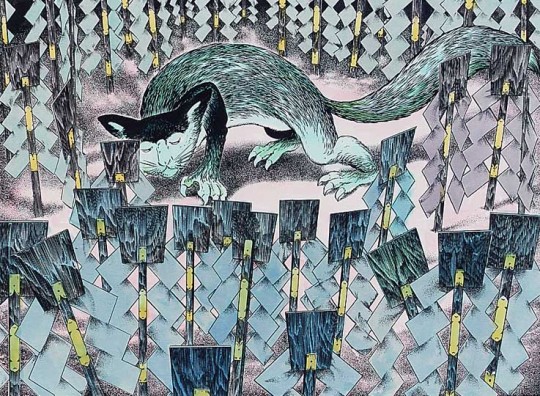
Kuda-gitsune, as depicted by Shigeru Mizuki (reproduced here for educational purposes only)
While there isn’t much information about kuda-gitsune in scholarship, especially scholarship available online in English, they received extensive coverage in various books about youkai written by Shigeru Mizuki, famous for arguably canonizing the modern concept of youkai. Note that while I am a fan of Mizuki's works, his encyclopedias are best understood as something closer to Borges’ Book of Imaginary Beings, complete with some dubious sourcing and possible fabrications. However, ultimately modern media about youkai, including Touhou, owes much to him, and arguably he continued the tradition of night parade scrolls which often invented new creatures wholesale, so it strikes me as entirely fair game to summarize what he has to say too. Shigeru Mizuki cited the Edo period writer Matsura Seizan as an authority on kuda-gitsune. He states ccording to the latter, certain ascetics (yamabushi) were provided with these critters upon finishing their training on Mount Kinpu and Mount Ōmine. In his account cited by Mizuki there are a lot of details I haven’t seen elsewhere. The storage tubes after which kuda-gitsune are named apparently had to be inscribed with a certain sanskrit phrase (left unspecified, tragically) so that the animals didn’t have to be fed. However, releasing them and giving it food was necessary to gain their help in divination. There was a downside to this - kuda-gitsune were apparently hard to place back in containment once released without the help of a seasoned specialist. Also, they refused to provide anything of value unless fed well, and they had quite the appetite. Mizuki cites the particularly disastrous case of an ascetic who kept multiple kuda-gitsune in a single tube, and eventually couldn’t pay for enough food for his collection since the animals kept multiplying inside. According to Mizuki it was believed that a kuda-gitsune could be gifted by its owner to another person, but the creature would come back if it was not satisfied with the food provided by the latter. If the original “fox tamer” dies before passing their kuda-gitsune to someone else, it will instead go to the Ōji Inari shrine located in what is now the the Kita ward of Tokyo.
Conclusion: Tsukasa and her forerunners
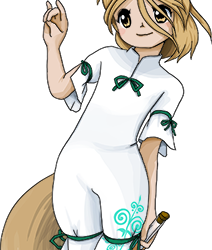
In theory I could’ve kept pointing out “see, it’s just like Tsukasa!” in virtually every single paragraph of this article. To answer the question from the title, evidently she is like that because that's how foxes have been in folklore both Japan and China for centuries. It is not really hard to see that ZUN is genuinely great at research when he wants to be, and Tsukasa's character is remarkably accurate to her real life forerunners, both as an adaptation of kuda-gitsune specifically and as a representation of the broader tradition which lead to the portrayal of foxes as supernatural creatures of questionable moral character. She engages in morally dubious “get rich quick schemes”, she definitely provides advice (of variable quality), and her self-declared ability from her omake bio pretty clearly reflects skills actually ascribed to the kuda-gitsune in folklore. In the newest game the ability to provide information is clearly in the spotlight - Tsukasa seems to be reasonably knowledgeable (she brings up Kojiki in a line aimed at Hisami, among other things), and other characters generally agree she’d be more useful doing something else than fighting. I do not think there’s any real reason to doubt this is what is meant. I think it can even be safely assumed that Zanmu’s decision to pressure Tsukasa to partake in her assassination bluff is rooted in genuine tradition. I’m obviously not going to say that Tsukasa reaches the platonic ideal of Okina, the quintessential character aimed at fans who like research, who largely seems to exist to get people to dig deeper for sources explaining the dozens of religious allusions in her dialogue, spell cards and design, but I do think it’s worth appreciating that the series reached a stage where even the minor animal youkai can be enjoyed as multilayered representation of centuries worth of genuine folklore and mythology. Bibliography -Bernard Faure, Gods of Medieval Japan vol. 1-3 -Michael Daniel Foster, The Book of Yokai. Mysterious Creatures of Japanese Folklore -Berthe Jansen and Nobumi Iyanaga, Dākini (Brill’s Encyclopedia of Buddhism) -Xiaofei Kang, The Cult of the Fox: Power, Gender, and Popular Religion in Late Imperial and Modern China -Shigeru Mizuki’s assorted writings on kuda-gitsune (collected online here)
356 notes
·
View notes
Text
I played the alleged anti-rpg, moon (1997) approximately 2 years ago; it was a game that took my mind by a storm and inspired a well of creativity unlike any other. After years upon years of being incapable of original work due to a deep rooted dry spell, it was moon that opened the floodgates of my brain back up and enabled me to start making things directly from the heart again.
I’ve played a lot of games, and moon is both a cult classic and one of the most fascinating for a good reason. In the 6~ ish hours you get with it, it communicates such a wealth of abstract thematics that have managed to create a ripple effect present with games we love even today. This post examines the core of the game: the metanarrative relationship that exists between The Hero and The Invisible Boy.
There are major spoilers for the game in this post. Please read at your discretion!
When moon posits itself as an anti-rpg, what does that term entail?
At a glance– the player assumes it’s a reference to the gameplay system which is structured around “saving” animals/monsters as opposed to fighting them.
However, what makes the game an anti-rpg in actuality has little to do with this feel good, heartening mechanic: because the very end of the game tells you distinctly that this mechanic will not truly save anything or anyone. Whether you’re killing or saving these monsters, animals, characters, etc. you are still viewing them as metrics, objects of your affection/destruction, numbers and things and targets for your own amusement. The Invisible Boy still has a leveling system, just like The Hero. To allow these creatures and characters to flourish, you ultimately must leave them behind. The game is an anti-rpg, not because you harness the power of pacifism over violence, but because the ultimate act of love for this game, for its characters, for its messaging is to step away from it and internalize what it’s communicated to you in your real life. That’s the only way you can “beat” it.
But to deconstruct this further: the game itself deconstructs the notion of “roleplaying” ala using the protagonist as a self insert through The Invisible Boy. Who is The Invisible Boy, and who is The Hero?
When introduced to the game, you are playing as a young boy who is subsequently also playing as a character: The Hero, who serves as his initial avatar. The first thing the game prompts you to do is enter a name. The title track of the song that plays during this sequence is Entry Song, a seemingly basic reference to “name entry” that doubles as an allusion to the fact that this is the exact moment where both the Invisible Boy and The Hero “enter” the world. The name you enter applies to both characters, a reveal that’s delivered to you at the very end of the game – The Invisible Boy has this name in lower case, while The Hero has it in upper case. Fundamentally the same name but mirrored to each other. The young boy is thrust into the world through the TV screen, losing his corporeal form and therefore becoming The Invisible Boy. His existence is a strange, undefinable thing; for a reason never made known or explicit, The Invisible Boy is capable of seeing dead animals felled by The Hero. This may be due to the metanarrative divide he exists within as a “real” boy who has entered the two dimensional world of the game, but his ability to communicate with the dead transcends his interactions with the slain animals. In the sequence with Tanaka, it’s noted that the Invisible Boy has the capacity for contact with spirits and that “regular people” cannot enter the liminal space that exists between the living and the dead. What does this imply regarding the Invisible Boy? I’ll circle back to this after establishing what we know about The Hero.
The Hero, when you are first introduced to him, only exists at the mercy and control of the boy controlling him; once that boy enters the universe, he seems to act in accordance to his mission regardless and is preoccupied with the notion of leveling up and defeating the Dragon no matter the cost. Of course, easter eggs and lore within the game go on to reveal that The Hero is actually Gramby’s dead grandson, pierced by the White Feathered Arrow and trapped within the cursed armor, which effectively brainwashed him into becoming a bloodthirsty warrior with no real cognizance of what’s going on. The rainbow generator may seem inconsequential, but rainbows often symbolize the bridgeway between life and death.
So what does that have to do with the Invisible Boy?
The simplest way of communicating it is that the Invisible Boy and The Hero quite literally cannot exist without one another. The prologue featuring The Hero (called FAKE MOON) that you go through foreshadows the game’s central plot events but through the lens of The Hero, which are then experienced through the lens of The Invisible Boy. From chasing around the “crazed dog?”, to the fight with Perogon, to boarding the airship, to the mass slaughter of the animals on the moon – the story of the game, whether it’s as The Hero or The Invisible Boy, has already been written into existence. Much of moon is storytelling in reverse, wherein the further you progress, the more you come to understand The Hero’s “reality” during FAKE MOON. The songs that play during FAKE MOON are songs that reappear during REAL MOON with different instrumentals to denote them (1, 2, 3, 4, 5). Same melody and yet it evokes a completely different feeling.
The Invisible Boy follows the same road as The Hero; everywhere The Invisible Boy goes, The Hero is shortly up ahead of him. They take the same steps, meet the same people, activate all of the same plot points. The Hero’s world is rigid and unyielding, limited to an 8 bit soundtrack with environments and people rendered to their simplest forms. The Invisible Boy’s world is a subversion of this, with no soundtrack to guide him – instead you’re given a variety of genre breaking tracks to play of your own accord, with only the sound of your own footsteps to accompany you (The Hero and The Invisible Boy’s footsteps are both used to characterize their presences). The Invisible Boy’s leveling system demands that he talks to and understands other characters, but there’s still a pervasive sense of loneliness that colors his gameplay, a feeling that never quite leaves; much like The Hero’s journey. When Gramby sees The Invisible Boy, she recognizes him as her grandson and uses the inverse of his name, the version of it that exists in all caps.
Is this to say that on some level, The Invisible Boy and The Hero exist as the same entity in dual points and egos? Possibly. The Invisible Boy is a real person, and The Hero comes into existence because of him. At the end of the game, when The Invisible Boy is slain by The Hero, The Hero dies immediately: because The Hero cannot exist without the Invisible Boy. When The Hero’s armor falls away, you do not see a child.
You see nothing. You see an invisible boy.
Florence speaks often of a recurring motif in this game: rebirth, the bridge between realities, life and death. Dying and being born again. The Hero gets his second chance – as the Invisible Boy. Because the Invisible Boy and The Hero are still a product of their design (the role of the protagonist), they condemn the cast and world to the same fate regardless of the means they take. Shedding their role within the game is the only way they can save anyone. Florence proposes that the dreamscape, the subconscious, is a gateway to another reality – The Invisible Boy’s “promises” to the Moon Queen take place in the dreamscape, where he retains his form as a human child as opposed to The Invisible Boy. The Invisible Boy and The Hero are both bound by their promise to save Love-De-Gard no matter the cost and no matter the sacrifice. On the moon, when you see the Moon Queen in person, she is physically attached to the Dragon The Hero fights: they exist as a dual ego, as two sides of the same coin. The Hero has been following the trail of the Dragon, while the The Invisible Boy has been following the guidance of The Moon Queen. They are one and the same.
Fiction, stories, games, are escapes to other realities that exist to us and us alone. We, as the player, make out its meaning. Is that meaning steeped in blood? Is it dehumanization? Is it gratification?
While many use the scrapped “ending” as a frame of reference for The Hero’s fate or what he truly is, that’s simply inaccurate; Kimura has talked about this “ending” quite a bit. Here is an interview where he states that not only was this not an “ending” but rather a part of a scenario that you’d clear in order to eventually attain an ending that resolved the scenario in question, but also that it was scrapped early into development because it was not the direction they had wanted to take the game in. Thematically, it’s incongruent with what we’re presented. Here’s another interview where Kimura discusses it, once again stating that it would clash with what the story was presenting as is.
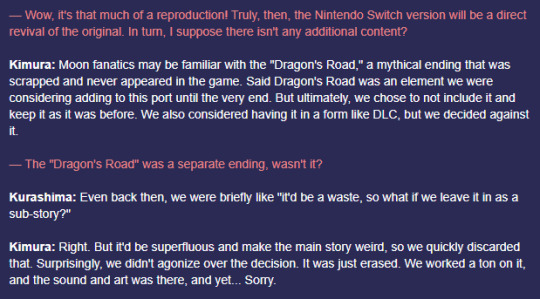
Conversely, there is a vocal theater that was released where you follow along with The Hero, aka the young boy that exists inside of him. Near the end of this theater, you get to hear The Hero actively make the choice to exit the game and open the door; perhaps cementing the idea that The Hero and The Invisible Boy exist as dual egos, hence why neither are shown in the ending credits.
The Invisible Boy and The Hero could be viewed as an elaborate metaphor for our relationship to gaming and art. They could be viewed as a metaphor for how young boys are socialized into violence through gaming. They could be viewed as a literal story of rebirth. They could be viewed as a young boy, learning to navigate the world and himself, at odds with these two facets of himself. They could be viewed as a young boy wanting to learn how to do right by the world, and the creatures he’s come to love. They could be viewed as something so abstract, or something so literal, that the possibilities are endless – but their identities and roles are inextricably linked and form the heart of moon. After finishing, I dug through the game in a relentless pursuit in some attempt to understand what happened to The Hero, how his narrative could be read more mercifully, what the point of this child’s alleged suffering was–
In the end, the answer is simple. You are him and he is you, just as the Invisible Boy is.
42 notes
·
View notes
Text
Symbolism of Eos
🌅☀️🌅☀️🌅☀️🌅☀️🌅☀️🌅☀️🌅☀️🌅☀️
Eos is the rosy fingered goddess of the dawn, the sister to Helios and Selene, and the daughter of Hyperion and Theia. She was known for her insatiable lust for men inflicted upon her by Aphrodite. She is a fairly unworshiped goddess for how large she is in Greek mythology, and is long overdue for a cult renaissance! Maybe we can reignite that cult by beginning with some of her divine symbolism and magickal correspondences!
🌈 colors:
- Saffron. According to Greek mythology, it is said in Theogony that lady Eos wears a saffron orange cloak reminiscent of the morning dawn’s sunrise, so saffron/orange and red are the colors typically most associated with her.
🍎 foods/herbs and spices
- Saffron. Again, although no foods or spices are explicitly stated to be divine of or sacred to Eos, it can be inferred by text that saffron is a spice that can be reasonably associated with her.
- Coffee. Although not mentioned directly, coffee is the drink perhaps most universally associated with the morning, the domain of Eos, so it can be assumed that coffee would be quite sacred to her.
- Cereal. Another breakfast item that is widely associated with the dawn and morning, cereal isn’t just a modern invention, grain cereals have existed for thousands of years, and although I’m not too certain on wether or not it’s always been a breakfast staple, the fact that it is so synonymous with it now leaves me reasonably sure it must be sacred to her!
🦌 animals:
- Grasshoppers. In the story of Eos and Tithonus, the goddess petitions Zeus for her most recent lovers immortality, however, she neglected also to request eternal youth. In time he shrivelled up by old age and transformed into a grasshopper. Classic dick move from big Z. Anyways, grasshoppers are sacred to her as a result of this incident.
🌸 flowers:
- Rose. Known for her rosy pink fingers and complexion, warmly toasted by the morning sunrise, roses are the obvious choice for lady Eos if your going for a traditional association! If you want to try something a bit more modern though..
- Morning Glory. A flower that closes up at night and opens up to the sunrise, this flower has Eos’s signature in its very name, and is a perfect flower to plant or collect in her honor!
💎 crystals:
- Sunstone. Named after the star she is iconic of, sunstone is an easy choice as a crystal or gemstone to equate to the goddess, it’s glorious orange hues are very reminiscent of her glory.
- Crocoite. A fairly obscure one, Crocoite is literally derived from the Latin name for saffron, due to its extremely fragile nature and beautiful hot orange color. A great special addition to an altar or shrine to her!
🪐 planets:
- The sun. Obviously, being the goddess of the sunrise, the sun is the planet that reigns as her sacred domain, a trait she shares with other sun related deities like Helios and Apollo.
☄️ astrology:
- Sagittarius. A fiery, passionate goddess with a history of Ill fated love and nearly debilitating lust, mother Eos is almost certainly a sag.
☀️ other iconography:
- Pitcher. In many Ancient Greek depictions of the goddess, she can be seen carrying a pitcher or watering can, a symbol of a new day and its fertility and awakening new growth it brings.
- Tiara. She is also known to wear a beautiful tiara that is always sitting upon her head, much like the shape of the sun rising in the morning over a hill!
🌅☀️🌅☀️🌅☀️🌅☀️🌅☀️🌅☀️🌅☀️🌅☀️
Do you know of Eos? And if so, what do you find epitomizes her glory and beauty for you? Let me know! If you like this post and wish to learn more about the gods of Hellen, consider following my blog! Happy day and blessings 🏛️💙
#male witch#green witch#hellenism#paganism#witchcraft#hellenic worship#druidism#baby witch#pagan witch#hellenic devotion#hellenic paganism#hellenist#hellenistic#hellenic deities#hellenic pagan#hellenic polytheism#hellenic gods#hellenic polythiest#hellenic community#eos goddess#eos deity#eos#greek deities#greek titans#greek gods#symbolismof
25 notes
·
View notes
Note
Hi! I really love your memes. Have you already done MBTI types as video games?
Thank you so much!! Honestly, I probably have at some point in the many years, but if I have, it's been a long time, so let's give it a go. I tried to get a mix of old, new, classic, and modern games in, and tried not to give every one a SUPER OBVIOUS game. Hope you like it! 😸
MBTI Types as Video Games
INTP: Slime Rancher

It took everything in my power to not do Portal 2 for INTP, because it seems like the obvious choice and I wanted something other than that. Maybe not as puzzle-oriented, but Slime Rancher captures a different side of INTPs like their affinity for unique experiences through Ne, comfort Si that allows them to organize all their slimes effectively, and their inferior Fe that lets them take care of cute little creatures with minimal risk.
INFP: Minecraft

An instant classic that lets your imagination run wild and live your life the way you think it should be lived, without the limitations of oppressive reality. Build the comfiest home with as many floors, rooms, walls, etc. as you want. Your house wouldn't be structurally sound and is impossible to create in real life? DOESN'T MATTER, it's what the INFP wants, and it what they can have in their own little world.
ENTP: Among Us

A creative and random environment where you have to either find the killer or be the killer terrorizing the space ship crew, interrupted by segments of ARGUING ~*~discussion~*~ about who the imposter might be, followed by voting to eject them into space via mob-mentality? Is there any game more chaotic and perfect for the ENTP to thrive in that I'm missing, here?
ENFP: Skyrim
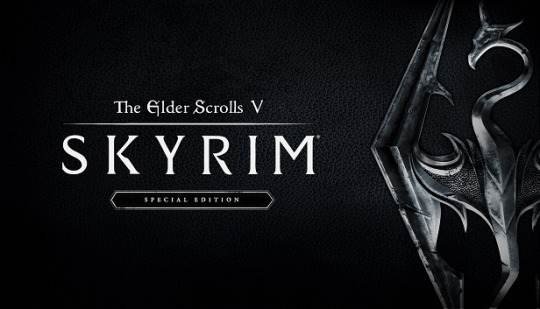
You are the nonspecific protagonist with unique dragon powers that let you literally scream somebody to death, and, once again, live your life the way you want to live it, as chaotic or lawful as you might want. Become a criminal werewolf who leads a dark, murderous cult by night, and is the dean of a magical college by day? YOU CAN DO THAT.
INTJ: Satisfactory
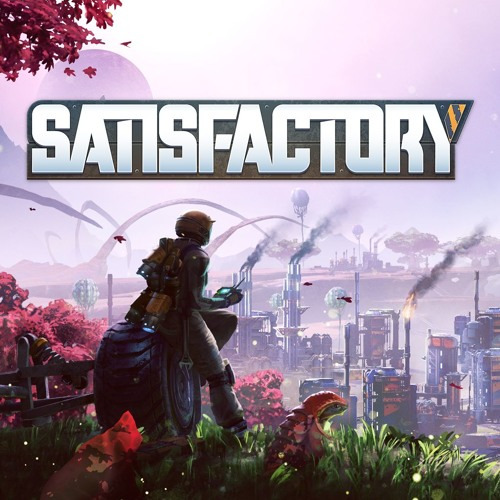
Slowly and steadily building the most effecient space colony to mine resources and build interesting and novel alien technology? What could the INTJ want more. It won't happen overnight, but the efforts of the INTJ compound with each and every day, and one day, they'll make use of every square inch of the planet's surface for their factory.
INFJ: Coffee Talk

A lesser known game to some, but just as impactful, nonetheless. You're simply a barista in a coffee shop, but you have the pleasure of meeting and hearing the stories of a diverse cast of characters that let you into their unique inner worlds. You'll get to explore their experiences and choose your own dialogue to interact with their lives and offer your input that is tailored to the individual character.
ENTJ: Left 4 Dead
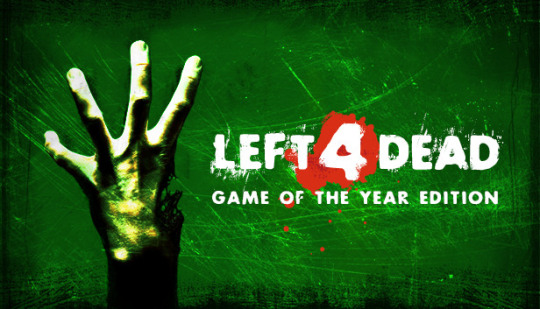
The goal is simple and well-defined: survive the zombie apocolypse. But the only way to do it in this game is to have all 4 players work together in perfect syncronicity as a well-oiled machine to cover all your bases as you traverse each level. It requires delegation of tasks, foresight of what's to come, and just a little bit of quick, thinking-on-your-feet, a perfect combination to engage their Te, Ni, and Se, respectively.
ENFJ: Mario Kart

Everyone knows Mario Kart, and everyone loves Mario Kart. Much like an ENFJ, themselves. Mario Kart has a very low barrier-to-entry so that the majority of people can learn to play quickly, and enjoy time with their friends! It's fun, it's casual, and it requires a bit of that tertiary Se to make some quick turns to finish in first. The game resembles the ENFJ personality itself, and it is a favorite of an ENFJ I know for those same reasons (as she doesn't play many video games).
ISTP: Assassin's Creed

(Couldn't find any good covers with Altair that fit tumblr's format, so I did Ezio, the fan favorite (and also probably an ENFJ assassins which is p cool?))
The franchise has undergone a lot of change over the years, so I do NOT mean the RPG elements, but rather the original elements of the games that made them so great! ISTPs would rather have a more focused way to engage the game, instead of the endless possibilities of an open-world, anyway. Quick reactions to stay hidden, a good grasp of the terrain around you and how to use it against your enemies, and a solid amount of Ti to calculate the most logical time to strike makes for a great way to engage the ISTP's top functions.
ISTJ: Super Smash Bros

Again, the goal is simple, fight your friends and be the last one standing. The rules are simple, in fact, they are completely customizable so you can save your settings to define exactly what kind of experience you want to have, and you know what to expect. You can play it simple with a set number of lives and no items, or you can crank the spawn rate of all items up to the max, if you're in a particularly low-Ne, (low-risk) feeling, kind of mood. Still, the goal is always the same. Hone your strategy, defeat your friends (or foes lmao)
ISFP: The Sims

Introverted by nature, they appreciate being able to spend some time alone without having to give up the things they like about the sensory world, including house and clothing fashion-design. These aesthetics were made to be seen, but sometimes they can only be made in a video game, and sometimes you need a break from real people. It's a realistic enough game that they can connect with it in a more relatable way than more abstract types of games, but they still please the Fi desire to live their personal life the way they wish without the limitations of reality.
ISFJ: Animal Crossing

Again, it's a familiar environment, with just a little flaire to excite that inferior Ne. You've got what seems like endless tasks (in a good way lmao) to keep you busy taking care of your island, and also forming positive relationships with your fellow residents! You get to meet new people, help solve the residents' problems, become a pillar of your community, and at the end of the day, retire to your cozy home.
ESTP: Palworld

It's new, it's weird but somehow familiar, it's Pokemon with guns. It might not be the most "original" game, but it was an inspiration nonetheless for the simple fact that it took all of the known successful elements of gameplay that people enjoy from other games, and put them all into one game that, for lack of better words, "just gives the people what they want". What you see is what you get, and it packs a punch.
ESTJ: Dark Souls

Although it is the more introverted game compared to ISTJ, it requires an incredible amount of strategy in order to champion this game. The medieval themes are familiar, but that's the only comfort the game provides due to its overwhelmingly punishing gameplay style that only the thickest of skin can overcome. What says thick skin like inferior Fi?
ESFP: Rocket League

It's extreme soccor (or football for my friends from across the pond), but instead of playing as people, you play as cars with rockets to propel them. Why, they ask? Because you want to, obviously. Realisitic enough that the concept is still based in a familiar reality, but the mayhem and competetion has been dialed up to 11 simply because it makes it more interesting that way. Again, what you see is what you get, AND IT PACKS A PUNCH.
ESFJ: Tabletop Simulator

It might seem like an odd choice, but hear me out. It's social, it's familiar, it's easy to jump into, and you're not limited to the physical copies of games that your friends have at their houses - you've got, like, any tabletop game you could possibly want to play! It alleviates the limitations we feel in real life when we want to play games with friends, but maintains the integrity of connection and fun you have with them. PLUS, you can flip the table after losing a game for comedic effect without making a mess in someone's IRL home.
#mbti#mbti personalities#mbti types#mbti personality types#intp#infp#entp#enfp#intj#entj#infj#enfj#istp#istj#estp#estj#isfp#isfj#esfp#esfj#16 personalities#16 personality types#ask#tigreblvnc
29 notes
·
View notes
Text
Filmmaking? In My BL? - The Horror Influences of Dead Friend Forever
Okay off the bat I'ma say that this isn't me definitively saying these specific films or tv series are what inspired 100% DFF. I simply do not know what stuff the screenwriters were pulling from influence wise when writing the script, nor what the director was pulling from when directing the series, with 100% flawless certainty.
Rather, this is a chance to talk more about horror, from films, comics, visuals, and sub-genres and how these various mediums are what I see in the fabric of DFF's horror makeup. Also, general point, this post will be discussing minor spoilers of: Scream, DFF, and Girl from Nowhere. So like, be aware~~
This post is partially inspired by an ask from @italianpersonwithashippersheart in which the anon had mentioned Scream.
I couldn't really respond to this in detail before cause I hadn't watched the series, but I have now and I can say that the show is very thoroughly nothing at all like Scream. I'm not confident in much - other than my inability to reach the top shelf at the market - but I am confident in saying that lol
But this got me thinking, what type of horror IS DFF? I've seen a lot of folks say it's a slasher, and I both agree and disagree.
Horror as a genre is vast with sub-genres, it's probably one of the most universal and popular genres globally, and every culture has their own horror legends, cult classics, mainstays and shlock.
So that's what I'm going to talk about in this post, the slasher genre, why I don't think DFF 100% can be boxed into that sub-genre, what type of horror I think DFF is, and the influences I see in DFF's filmmaking and thematics.

So if we start anywhere, we gotta start with Scream (1996) since that's a comparison I've seen being made a lot.
The main reason I disagree in the comparisons to Scream is that Scream is considered a work of satire first and foremost. Through the power of capitalism and franchising, it's also consider a "whodunit" series.
“Scream” is the first movie of its kind to execute a satire genre within a horror movie, which is one of the most iconic and memorable elements of the film. The original movie makes many references to other well-known horror films and mocks them, while simultaneously leading the same plot points. [...] Although the following films in the “Scream” franchise do not follow as much of the same mockery of horror films, they are still considered to be satirical because of their use of mockery toward the movie franchise. “Scream 2” mocks film sequels and “Scream 3” mocks film trilogies." (source)
[sidenote one of my favorite examples of satirical meta horror is Wes Craven's New Nightmare]
DFF isn't satirizing anything in horror, it's almost entirely self-serious. Sure there's a couple of moments of hilarity - dick biting, and scooter snatchin' - but overall the show plays things pretty straight (gay sex notwithstanding). I've seen some folks claim it's subverting horror tropes, but I don't see that either (would be interested in discussing that tho cause I'm curious).
I get why people make this comparison though, Scream is a 27 yr old franchise, and probably the most relevant slasher franchise currently. The new Halloween movies were...cute but aside from the first Halloween (2018) the rest of the reboot franchise had diminishing returns; each film made less than the previous, and received lower critical scores.
However, Scream has actually grown as a franchise in the States in terms of box office draw. That said, Scream is actually not a huge earner overseas, Scream IV (2023) earned more than 60% of it's box office revenue domestically. In Thailand, according to reports, it only earned about 300,000 (compared to other international territories like Brazil where it earned around 4,600,000).
So I don't think DFF is pulling much from Scream in terms of setting, tone, or story. I do think the show most resembles Scream in directorial style, specifically in the imagery of the Killer's design and in the slow-crawl mask reveals that have happened so far.
youtube

[very obviously spoilers for all the scream films watch at your own risk etc, gif by @my-rose-tinted-glasses]
So what is a slasher film or story?
"A slasher movie is a horror sub-genre that involves the murdering of a number of people by a psychopathic killer, typically via a knife or bladed tool (such as a scythe).
In general, the horror genre is known for its fear, violence and terror. It will typically feature a menacing villain, whether it be a monster or a supernatural evil spirit, for example." (source)
Other common but not inherent secondary characteristics of a slasher story will include: young adults as central characters, sex (typically as a means of punishment "sex gets you killed"), the killer is motivated by revenge, lots of gore and/or violent kills and a "final girl".
I point out common but not inherent because the main tenants of a slasher story is the overall body count, female protagonist and a mysterious (typically masked) killer.
For example, in Scream (96) Ghostface is motivated by revenge, however in Halloween (1978), Texas Chainsaw (1974), Prom Night (2008), You're Next (2011) and Wrong Turn (2003) the killers are not.
If there is a western horror franchise or film that the setting of DFF more closely aligns with, it's Friday the 13th (2009). Which was a sequel/reboot to the original Friday the 13th (1980) starring Tumblr's own Jared Padalecki as one of the leads (that was an interesting year as Jensen Ackles also starred in a remake of a classic 80s horror film My Blood Valentine).
In Friday (09) the bulk of the story takes place at a mansion styled cabin in the woods near Crystal Lake owned by one of the characters rich parents. Jason eventually hunts down each of the characters, killing them in various ways, and they even find his home with a shrine to his mother there. There's also like, a lot of sex and nudity in Friday (09) none of it fun or sexy as it's pretty, unfortunately, misogynistic.
Being in an isolated area, like the cabin in the woods in DFF and Friday (09) is also not a requirement within the slasher sub-genre.
Many slasher films, especially American classics during the genres 80s peak, actually take place more often in suburbia rather than in isolated locations like the woods. Which reflected real world anxieties from predominately white communities and a turn towards more conservative politics of that era in America.
"Those same well-kept neighborhoods and quiet backyards of my childhood were also the battlegrounds of the ’80s horror movie, a radical pivot in the genre’s history. The decade’s opening years were bracketed by the kidnappings of Etan Patz (which inspired the Missing Kids on a Milk Carton program) and Adam Walsh (which inspired his father John Walsh to later create the TV show "America’s Most Wanted"). Combined with the conservative turn in crime and punishment law brought on by the Reagan administration, horror appeared to turn from the supernatural curses of the decade before ("The Exorcist," "The Omen") to a homegrown product of our own sins. Michael Myers, Jason Voorhees and Freddy Krueger are psychotic loons but also human beings who come not from afar but from down the street. The possibility that one of them could be lurking just beyond the sliding back door of a sleepover birthday seems too darkly delicious to pass up, a fictional killer standing in for a warning your parents and society gave you about “stranger danger,” real-life evil lurking in the dark." (source)
Isolated settings, while can be a setting in slashers are more often found in psychological horror films: The Strangers (2008), When A Stranger Calls (1979, 2006), Hush (2016). Also the Evil Dead (1981, 1987, 2013).
[The latter has it's own interesting history of wanting to be psychological body horror, to horror comedy cult classic, back to psychological body horror. Honestly if any franchise has influenced the "horror set in a cabin in the woods" it's Evil Dead, which is paid major homage to in Cabin in the Woods (2011).]
Sooooo is DFF a slasher?
Hm, for me, yes and no. Slashers require a high body count and pretty gory deaths. So far we've only had 3 deaths, only two of which were even committed by the killer themselves and not even by their own hand (ie directly).
For me, the slasher elements of DFF exist in the directorial styling of the film, meant invoke a classic slasher film but that's not where the true horror of the story exists.
I'm a big slasher fan, so I'm not trying to discount the sub-genre at all, lots of slasher films are good, and when done well, they're truly scary. But they also tend to be straight forward in design, the fear comes from the feature of being stalked by an unseeable and unstoppable force infiltrating what should be a safe space (your home, your school, your neighborhood, your camp grounds etc).
Which is why slasher films are also the most common horror sub-genre to be parodied (Scary Movie franchise) or made into horror comedies like Freaky (2020), The Final Girls (2015), Happy Death Day (2017), and Totally Killer (2023).
[sidenote slashers have this in common with the zombie sub-genre of horror as zombie films in America have also tended in recent years to be horror comedies or horror action like: Little Monsters (2019), Cooties (2014), Zombieland (2009), Pride Prejudice and Zombies (2016)]
I'd argue that DFF is much more in line with psychological horror than slasher horror. Because it is anything but straightforward and also has a strong emphasis on relationships and isolation as does most psychological horror.
Films like: It Comes At Night (2017), Us (2019), Perfect Blue (1997), A Tale of Two Sisters (2004), The Forgotten (2017), Dark Water (2002) all have similar elements in terms of tone as DFF.
The isolated setting, the allure of the mundane normality being a veneer for the violence lurking beneath the surface, the existence of the paranormal, the use of drugs to increase fear, the unsettling paranoia, and slow burn crawl towards all the characters being unteathered from themselves, the growing distrust between them and their loved ones, the plot twists and turns, the emphasis on human relationships and the horror that comes from those.
The backstory with Non is what pushed the show past slasher horror to psychological horror for me. Because Non's "downfall" as it were, feels more akin to the slow burn psych horror rooted in a lot of Japanese, Thai films/tv shows, and modern A24 style horror films.
The horror of Midsommar (2019) doesn't come from jump scares, or violence, but in slowly watching the protagonist grow more and more unteathered, mistreated, gaslit, more and more with each passing moment, slowly inducted into a horrific cult and being able to do nothing to stop her descent.
A big influence I saw in DFF was Girl from Nowhere (2018); the school setting, the crimes committed by a group of students against a singular student, class exploration, structural violence, the exploration of retribution are all topics explored in the first season of Girl from Nowhere.
Even the series trailer for GFN and the pre-release trailer for DFF are similar in production design and tone:
youtube
youtube
Titled "BFF" the two-part finale from season 01, is about a high school reunion, where a group of now established adults come back together for a party (their reunion) only to be confronted by their past via Nanno (the shows protagonist for lack of a better term).
Through Nanno we learn about the chars past misdeeds in high school - bullying, physical assault, stealing, the works - and their current crimes as adults. As more and more layers of the truth, lies, and betrayal are revealed, the friend group begins to crack, fracture and turn against each other, growing more and more paranoid and angry.
Nanno tells the group that they've also all been drugged with poison and there's only one vial of antidote left, the "friends" all horrifically murder each other in order to get the antidote. In the end, no one survives. EXCEPT, it was all a mass hallucinate and the group wakes up, remembering everything, and quietly leave one-by-one. No longer friends, no longer not-friends, everyone forever changed by the experience.
It's an unsettling ending that leaves things open ended. This group of friends were responsible for the bullying and death of Nanno (she's fine she's like immortal or something I'm pretty sure GFN was partially influenced by Tomie by Junji Ito) and they simply refused to acknowledge what they did to her, nor talk about her, eventually forgetting she existed until forced too through a traumatic retribution by Nanno herself.

[Nanno from Girl from Nowhere, Tomie from Junji Ito's Tomie series]
DFF has a lot in common, from my perspective, with GFN in terms of tone, themes and even parts of it's story.
Nanno isn't doling out "justice" she doles out retributions, punishments, sometimes they're outright torturous. Whether the recipients "deserve" these punishments or not, is really up to the viewer. The show does a good job of showcasing a wide variety of characters who are unrepentant, sympathetic, and somewhere in between. The fears it plays upon are more slow burn, it boils the characters rather than setting them on fire like slashers do.
DFF is similar in this aspect, it boils the characters. Watching Non's story, you already know at the start it's nothing good. We know from the first flashback something bad has happened to Non, but it's not really something, it's many things - so many things - that have led to whatever tragedy the main group must pay for.
It's these compounding factors one after another that brings Non to a boil, and the same thing happens with Tan/New. The horror of DFF is more about getting under the skin, causing the characters discomfort by forcing them to confront the sins they've committed (is there anything more horrific than being seen? Especially if you ugly?).
I mentioned Junji Ito in reference to Girl from Nowhere, to say Ito has been influential on horror feels like an understatement. His series Tomie has been adapted into 7 different Japanese films, he's won 3 Eisner awards (the highest award you can win in America for comics publishing), along with a slew of awards in Japan, his series Uzumaki has been referenced in super popular anime like Jujustu Kaisen.
A big factor of Ito's work is body horror and psychological horror. His work unsettles, and is very visceral. Since Uzumaki was referenced in DFF I think rather than being influenced by specifically Uzumaki (which DFF doesn't have much in common with in regards to general story) I'd argue the show is more influenced by Ito's desire to unsettle.

[from Uzumaki], 1998]
Also potentially to take symbols of piety, faith and protection (the temple, the cross at the chars high school) and turn them into places of horror for the characters.
Like Ito did with the spiral motifs in Uzumaki, said Ito in an interview:
"The "spiral pattern" is not normally associated with horror fiction. Usually spiral patterns mark character’s cheeks in Japanese comedy cartoons, representing an effect of warmth. However, I thought it could be used in horror if I drew it a different way." (source)
[I am also begging y'all to check out Junji Ito's book Cat Diary it's hilarious, even more so b/c his style of art is so rooted in horror]
I think DFF is actually very Thai in it's exploration of what's unsettling and horrific to youth culture in Thailand currently. The feeling of haplessness, judgement, an inability to exert control over one's circumstances, mental health, consent, bullying, these were themes and topics explored in both seasons of GFN but also some of these were explored in The Whole Truth (2021) a Thai horror/mystery film.
There's a scene in The Whole Truth in which one of the protagonists school friends secretly films their younger sister getting undressed without her knowledge, and when caught, the classmate threatens to release the clip publicly and claim the sister is "a slut". One of the protagonists is also bullied at school - including by this disgusting classmate who they still consider "a friend" - but puts up with it in order to be in a friend group at all (this bullied char also has a physical disability which contributes to their mistreatment at school).
I think DFF is exploring a lot of these same topics but most of the characters are just gay this time around.
Okay I'm losing steam here a bit, this has gotten very long, but overall I'd argue that DFF is much more psychological horror than a slasher, in terms of it's tone, and story. Whilst invoking slasher imagery in it's directorial style.
That said it's much more in line with Thai and Japanese horror than American horror in regards to it's themes. If the series was going to be boiled down just to the basics, I'd quantify it as psychological horror mystery.
And those are my thoughts on DFF and horror, I guess lol I'm not 100% satisfied with this but god damn I'm tired this took forever lmao if y'all made it this far, bless and stay safe out there cause the ship wars are wildin out in these parts.
Check out other posts in the series:
Film Making? In My BL? - The Sign ep01 Edition | Aspect Ratio in Love for Love's Sake | Cinematography in My BL - Our Skyy2 vs kinnporsche, 2gether vs semantic error, 1000 Stars vs The Sign | How The Sign Uses CGI | Is BL Being Overly Influenced by Modern Western Romance Tropes? | Trends in BL (Sorta): Genre Trends
[like these posts? drop me a couple pennies on ko-fi]
#dff the series#dff spoilers#dff meta#dead friend forever#dead friend forever the series#chaos pikachu metas#pikachu's bl film series#fuckin a this is long#almost ran through my entire final fantasy soundtracks playlist#and that's a lot of freaking final fantasy games
87 notes
·
View notes
Note
what would squilliam and shoehorn think of the stab movies?
So in-universe they're considered kind of bad and trashy when they come out, and from what we see they play in to a lot of the cheesy slasher tropes that scream subverts (ex. turning Casey's death into a shower scene for no reason). Later on in the franchise we find out they've developed a cult following, and from what we see of them on screen they're very campy. There's lots of movies IRL that follow this pattern going from bomb to cult classic: Dead Alive, The Thing, Slither, Phantom of the Paradise, ect, ect.
We also know that at least the first 3 Stab movies are directed by Robert Rodriguez who is a real (and kind of awesome) director known for stuff like From Dusk Till Dawn, Spy Kids, Machete, Sin City, and Planet Terror. I genuinely like a lot of his work but its pretty over the top, over campy, silly, fun so I think that gives us a sense of how those first three Stab movies feel.
We also know that Stab 8 was directed by Rian Johnson, director of Knives Out, Glass Onion, and the TV show Poker Face- all stuff that can have a bit of a lighter tone, not devoid of camp, but generally movies that take themselves a little more seriously. To illustrate the difference between these guys I could imagine Rian Johnson actually directing a modern Scream movie, but I can't really see Robert Rodriguez doing the same. This is far from an insult to Robert Rodriguez by the way, I just think his style is better suited to other stuff. So I think probably the later Stab movies feel a bit more like the Scream movies, while the earlier ones exist in a different media space.
To recap, based on what we see in the Scream movies, Stab is a bit cheesy and trashy, pretty campy, but they do ultimately develop an audience later on. So far, this sounds like something Stu would be into tbh, I think he likes the silly stuff as much as the really fucked up stuff, and the fact that its based on his own story would be hilarious to him. Like he would find it so fucking funny that they inserted a random shower scene in for Casey, and he would find his own portrayal by Vince Vaughn to be hilarious.
Billy is another story. I do think that Billy can enjoy a sillier slasher, especially if it has other stuff going for it (eg. gore, creative kills ect, insane body horror), but he can't buy in to the same amount of ridiculousness as Stu can. Beyond that there's the fact that the Stab movies are a bastardization of his story, like Billy already considers the massacre his movie, so the Stab movies are a bad remake to him. I think especially the idea that his killings aren't being taken seriously would aggravate him.
And then there's the fact that he's played by Luke Wilson. And like. Listen. I don't have anything against Luke Wilson, I know very little about him but I know Billy Wouldn't be happy about this:
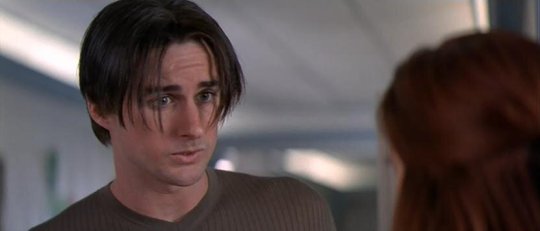
Honestly I don't know who they could have cast as Billy that wouldn't have pissed him off. I think that as much as he would want the notoriety of his story being adapted into a movie, he would functionally enjoy being portrayed by someone else.
In the context of my writing, where he and Stu survive this is especially true because the Stab movies in Debaserverse will have Billy and Stu as final boys. Realistically this means they'll be shoved into tropey archetypes, a number of which Billy would hate for himself.
Stab is absolutely going to come into play in WoM by the way! I won't go into much detail about that right now but let it be known. There will be Stab.
#Stab 1997#Stab movies#scream 1996#character analysis#billy loomis#stu macher#stuilly#wave of mutilation fanfic#debaserverse#ask
43 notes
·
View notes
Note
Hello Mr. Dapper! Love this blog and your many reimaginings of classic dnd deities and creatures. I was curious about something: Considering your dislike of purely evil gods and DnDs future focusing on the guy, what are your thoughts on Vecna?
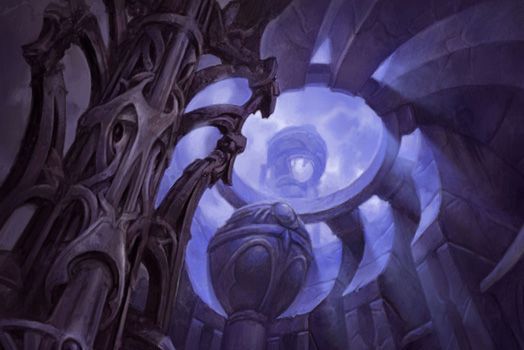
Deity: Vecna, the Whispered One
My task of overhauling d&d’s villanous pantheon was started by a simple critique: that if god was evil, there still needed to be a reason for people to worship it. To go with one example, So many of the death gods in d&d want to kill everything that lives, yet they’re still presented as having legions of followers who are happy to die for them in opposition to the party. You can say “Oh they’re just brainwashed, crazy cultists” but that’s just bad writing and thematically empty, neither of which I want for the sort of games I run.
Vecna is actually an interesting case study in that he’s an outwardly wicked deity that has a theme which people would actively want to follow: As a god of secrets, Vecna is the patron of any who will sacrifice anything to learn the answer to their problems, or conversely, the ones desperate to ensure their own secrets will never be known. The story of Vecna as a mortal mage who attained first lichdom, then godhood is an aspirational one for all those power mad occultists out there, a common enough demographic in the d&d world both as villains and as player characters.
Cults of Vecna worshippers likewise make sense as the whole point behind the historical practice of mystery cults was that those at the upper levels maintained their power through control of information and access to secret learnings. You want to learn how to do magic? To speak to the dead? To protect your secrets from being known? Put on this ominous robe, learn the secret handshake, and don’t forget to drop your tithe intto the altar’s collection skull. Think of it like a forbidden knowledge based MLM.
Here’s some adventure hooks:
While many of the whispered one’s acolytes dedicate themselves to discovering to the delving of arcane mysteries, others focus their attention on more worldly secrets. A powerful noblewoman is being blackmailed by a worshipper of Vecna not only for personal enrichment but also as an act of devotion, after he uncovered proof of indiscretions that would ruin her reputation. While she’s too afraid to go for help herself and risk exposure, a devoted servant has seen her hidden suffering and has contacted the party for aid.
Barely disguising its fiendish nature, a devil in service to Vecna approaches the party with an offer to reveal the secret intents or weaknesses of their enemies, if only they will deign to meet its terrible price. While this information could do great good, or even save lives, just how low are the heroes willing to stoop?
Seeking out the aid of a powerful mage, the party discover the old man on the brink of nervous collapse, having looked to deeply into the void and filled his mind with visions best left unmentioned. Haunted by nightmares both real and imagined, he needs their help in quieting his mind through the gathering of rare ingredients and the distillation of a potent elixir. The process is not without risk however, are the party willing to help if it means erasing the information they need from his head, to say nothing of potentially lobotomizing the poor wizard?
Art
#deity#vecna#divinity: knowledge#divinity: death#divinity: magic#divinity: madness#spy#fiend#lich#cultists
125 notes
·
View notes
Text
my letters to you

Aizawa Shouta x reader
type: fluff to angst
warning: major character death, non-descriptive violence, grief
a/n: i did not intend for this to be so long, i'm already working on the next part, i just wanted to get this out since it's already at this length, this is probably the saddest thing i have ever written, sorry in advance. reader is referred to with she/her pronouns
word count: 4.7k




As a Pro Hero, you had known since your school days, the job held the risk of one day not letting you return home. While it was a scary thought, devoting your life to a job that very well may take it, you had no doubt in your mind that being a hero was what you were meant to do. So, from a very young age, you had decided you wouldn’t ever let yourself get too close to someone, especially not your fellow hero’s in-training, so you wouldn’t have to suffer the grief of losing them, and they not have to suffer loosing you, if it ever came down to it. That was, until you met Aizawa Shouta in your first year at UA high school.
He sat two chairs behind you your first year of school, the quiet one in his loud friend group, and though many people didn’t seem to see it, you saw how incredibly kind that boy way. You saw in him what you hoped others might see in you, that he was truly born to be a hero. You decided, looking at that dark-haired boy who sat two seats behind you your first year at a high school for heroes, that he was going to be someone that you let get too close.
You spent your school days studying and training with your peers, and the evenings after school walking home with Shouta, and on those trips to and from school, you slowly fell in love with him, and him with you, not that you were aware.
The two of you would often walk home as the sun was setting, along the river, on lookers would see the couple, bathed in the orange light. The girl, a large smile on her face as she talked excitedly about nothing in particular, looking forwards towards the sunset and their destination, and the boy, a small, barely noticeable smile on his, looking at her as she moved forwards with a bounce in her step.
Walks home slowly morphed into afterschool dates, not that either of you had the courage to actually call them that, often stopping by things like bakeries and crepe stands. On your first visit to a crepe stand, you ordered the cult classic strawberries and cream, and much to your disgruntlement, Shouta ordered dark chocolate on dark chocolate, your face taking on an expression of disbelief as he took the first bite of his and seemed to genuinely enjoy it. He mistook your expression, and thinking you wanted to try his crepe, shyly offered you a bite. Feeling bad for judging the sweet boy standing next to you, you took a tentative bite from the crepe, maybe it wouldn’t taste as bad as you thought it would! Maybe now that you’re older you’ll enjoy dark chocolate more than when you last tried it! Alas, dark chocolate has remained the same, and so has your taste, as you make a displeased face and after swallowing, stuck out your tongue in disgust. He let out a little laugh at your expression, and asked you if you didn’t like dark chocolate, and you replied that no, nobody with normal taste buds should like dark chocolate, it tastes like dirt! He chuckled again and the two of you started back on your trek home, you finding solace in your normal and tasty crepe, and every few minutes for the rest of the walk, adding more reasons and defamation to dark chocolate. Even though you were dissing something he enjoyed, he didn’t seem to mind, as he listened with a small smile on his face, eating his crepe and watching you.
The two of you often frequented an arcade that was on your path home, having almost weekly competitions on who could beat who’s high score, Shouta never seemed to the comparative type but when it was just you two, you could see a rare grin forming on his face as the levels increased in difficulty and he got closer and closer to the besting number, the glint in his eye wasn’t just from the reflection of the arcade game’s screen, and it gave you butterflies.
On the last day before summer break, your second year of school, you asked Aizawa Shouta to meet you behind the school building after classes had let out. It wasn’t too strange that the two of you were meeting after school, since you usually walked home together, but why behind the school instead of in front by the entrance gates was confusing to him.
You were waiting there for him, with a small white box in your hands, and as he approached you, you bowed and put your arms out, presenting him with the little package. “Aizawa Shouta,” your voice trembled but you continued on, “will you please go out with me?”. You felt him take the box, so you let go and quickly straightened yourself, but did not raise your eyes from the dirt you were standing on, too nervous to meet his. It was quiet for a long time, and your heart began to sink at the prospect of rejection. You finally looked back up at him, tears starting to sting in your eyes, only to have your eyes land on a Shouta Aizawa whose face was so red it looked as if it may start to glow.
“Are… are you blushing?” You questioned him, fear tinged the edges of your words. His eyes shot up to meet yours, only for a second before returning to the ground, and he gave a shy nod of his head.
“I,” his voice caught in his throat, like it wasn’t ready to yet talk, “I wasn’t expecting this.”
“Is that a no?” disappointment heavy in your tone.
“No!” he shouted, and then, looking as if his sudden outburst was a surprise even to him, he continued, “I mean, I think you’re really cool, and smart, and I really enjoy hanging out with you, and I think you’re so pretty.” As he lists his compliments towards you his volume lowered in embarrassment, his last word being barely above a whisper.
“So,” he quickly started again, voice returned now to a normal volume, “I would like to go out with you, l/n y/n.”
The tension you didn’t know had built up in your body suddenly released, stress of rejection melting off of you and into the earth below. You let out a shaky laugh, tears that had been caught in your eyes spilling over the brim and down your cheeks, your throat slowly untightening from the adrenaline. “Thank you, I’m so glad.”
“Oh no nono,” he said worriedly, taking a step towards you, and reaching out an unsteady hand to brush a tear away with his knuckle. “Please don’t cry, why are you crying?”
You laughed, “I really don’t know,” and you grinned, “I’m just so happy.”
He blushed and looked away, a hand reaching up to rub the back of his neck, “yeah, me too,” he murmured.
You two started the walk home from the back of the school, your hand shyly reaching for his.
“What’s in this, anyways?” he asked in reference to the little white box you had presented him earlier.
“Oh,” you blushed, embarrassed again, “its homemade dark chocolate.” He looked down at the box in his free hand, and a smile played at his lips.
That day on lookers would see the couple, bathed once more in the orange light, next to the slow flowing river. The girl, a large smile on her face as she talked excitedly about nothing in particular, looking forwards towards the sunset and their destination, and the boy, a small, barely noticeable smile on his, looking at her as she moved forwards with a bounce in her step, but this time, they were hand in hand.
Having yet joined a hero’s agency to intern at since Aizawa hadn’t either, when you were offered a place at His Purple Highness’ agency along with him and your mutual friend, you jumped at the opportunity to have even more time with your boyfriend. The two of you had kept your relationship relatively quiet in fear of it affecting the opportunities you both would be offered in the future, not wanting to be barred from working along one another. It was the middle of your second year when one of Aizawa Shouta’s and your friend, Oboro Shirakumo, was killed during your hero work studies. You were there with Shouta but had been knocked out by the Villain Garvey’s stock quirk and left to watch in dazed horror though foggy vision the violence that continued. It started to rain. You watched your beloved Aizawa fight the villain by himself, a boy who never thought he was meant for solo combat, doing what he must to protect the nursery school children, knowing he truly was the last wall between them and the villain. You watched him defeat Garvey, and as back up arrived, watched as he was congratulated on his victory, alone. Your barely conscious body had been picked up at that point, paramedics moving you towards an ambulance. You saw your Shota’s gaze follow a pointed finger, to where Oboro’s body had been removed from the rubble and gently placed into a body bag, already stained with cool blood, mixing with the wet ground under him. Rain had started to pour by then, the cold missiles stinging the skin of your face, it mingles with the warm salt of your tears. You desperately, and weakly, push away the medics trying to help you, and stumble towards him, standing in the freezing downpour. When you reach him, you throw your arms around him, and the two of you sink to your knees. You press his cooled face into the warmer skin of your chest, squeezing him tightly as your body gently shakes with unsure sobs. If he cried, you couldn’t tell, the two of you sat kneeling in the rain for a long time, long past the point of soaking you to the bone. Hizashi joins you two at some point, mourning in the rain together in a way no children should have to, and when told to move out of the rain, he speaks for the three of you in saying that the weather and your place in it was befitting of the occasion.
After the shocking death of your friend, Aizawa changed, he was still the boy you loved, but he poured more and more time and effort into solo training, not ever wanting to have to rely on others in combat. He got it into his head that he, someone with a non-combat based quirk, still had to be able to protect even his fellow combat based quirk heroes. He never wanted to be weak like he was that day in the rain ever again. He never wanted to lose anyone else.
You changed after Oboros death too, it brought back your dated mentality of not wanting to get too close to anyone, but you knew, if you distanced yourself from your sweet boyfriend, it would be one the gravest mistakes you ever made in your entire life. So, instead, you thought about your mortality, how much you missed your dear friend already, and how this very thing could happen to you too one day. You were okay with the idea of losing your life in battle, it held honor, you had accepted that long ago. Now knowing the other side of the coin, being the one left behind when someone dear departed while in battle, you knew you couldn’t do nothing.
So, you started writing letters to Aizawa Shouta, for the just incase. And every year or so, you would rewrite them, having them updated to the most recent you. You did that for quite some time.
You and Shouta experienced many first together. You graduated, watched him start his underground hero agency while staying to side kick under His Purple Highness, working up the ranks until you yourself were ready to set off on your own as a Hero. Your time as a sidekick had allowed you to slowly rise through the popularity ranks, and when you debuted as a hero, you already had your standing in the top 100. You and Shouta moved in together 3 years after graduating, never having broken up, you had just decided it would be important to establish yourselves as individuals before you moved in with one another. Bright eyes 21-year-olds, charging their way into the world, establishing yourselves among the hero ranks. A year later he proposed, it wasn’t at a fancy restaurant on the top floor of a hotel, or a big spectacle with all your friends and family there, instead it was in the warm orange light of the setting sun, on the walk home from visiting a crepe stand, not too much unlike the one you visited when you were in school. It was mid spring, and along the river, covered in a blanket of pink petals, he got down on one knee. The backdrop of sakura trees in full bloom, and before you, your beloved presenting you a lovely ring only he could have picked, that suited you so well, you were the happiest person alive. You lowered yourself down onto your knees as well, ignoring the looks of curious onlookers, and threw your arms around his neck, knocking him over into the grass. With tears of joy in your eyes, you took his face in your hands and peppered enthused kisses all over his face, his cheeks, his eyelids, his nose, his forehead, his chin, until you reached his lips. You pressed a lingering kiss to them, before pulling your head up, and meeting his eyes, “Yes, yes a thousand, a million times yes.”
He grinned back at you, and using the pads of his thumbs, wiped away the tears staining your cheeks, “thank you.”
Onlookers this time would see the happy couple, walking in the light of the setting sun, hand in hand, but this time around, she had a ring on hers.
At the ripe age of 24, the two of you tied the knot, the date was set to the day, 10 years ago, that the two of you had first met at the entrance ceremony of UA high school. He looked dashing in his best suit, and you looked ethereal in your dress as you walked down the aisle to meet him at the altar, both of you wearing face splitting grins. You were in the top 40 at that point in your career, and the media had a small field day with your wedding. The 34th ranked hero (y/h/n) and the elusive eraserhead were wed today at an exclusive venue, only close friends and family were invited! Read more to find out all the juicy gossip of the latest hero wedding.
After your wedding you moved out of your shared apartment and into a cute little two story in a residential area of town, with enough room for whatever the future may hold. You rewrote your letters for the last time in that house.
It was 13 months after the two of you got married, that it happened, a balmy May evening. Villain activity had been on the rise and stronger villains were appearing everyday. He wasn’t on the scene when it happened, he wasn't able to do the thing he trained so hard to do.
He had heard your call for backup over the radio, when you encountered an especially strong opponent, and had been rushing towards your location, tuning out the reports that were constantly being fed into his ear, as you were the only thing on his mind. When he was only 5 minutes away, there was an explosive sound, and the whole neighborhood began to shake, and in the distance he saw a plume of dust and smoke rising into the darkening sky.
You had been on the edge of being defeated, knowing that that was truly the end, and had decided to take the rising villain out with you. It had been in an abandoned warehouse in the business sector of the neighborhood, there probably wouldn’t be anyone around expect for you and the person you were fighting, you reasoned with yourself as you set your quirk off for the last time, making sure that if you go out, your last fight wouldn’t be one that you lost.
The dust had started to settle by the time Shouta arrived, there were other heroes and rescue teams already there, several of whom were mere moments away from providing backup, but they would have been too late even if you didn’t decide to be as rash as you were. Many were shifting through the rubble as he swung his head from side to side, looking for you, deluding himself that you would be among the heroes on top of the rubble, instead of under it. He didn’t see you.
Someone called out that they had found you, it was Hizashi, Shouta saw him cradling your broken and bloody form. A sound ripped from his throat, choked, horrified, bloodcurdling, and he rushed over to where his blond friend kneeled in the wreckage. Hizashi gently handed off your cooling form to his best friend, but remained next to him, as Shota murmured to you.
He pleaded for you to wake, for you to move, for you to open your eyes, god please just breath please. There was nothing you could do though, you weren’t there anymore, not really. He clung to you, and wept, voice growing hoarse, till his cries were nothing but shakes of his body. Eventually, medics had to take you away, and he watched, as they zipped your lovely body up in the disgusting black bag. He watched you be carried off, though the medics were treating your body with the utmost respect, he could not help but despise them for taking you away.
It was on the news when he got home, the tv having been left on. He carefully took off his shoes, stripped of his dusty uniform, and showered, going numbly through a routine he had established, which was missing an essential part, you. He dried and dressed, and made his way up to your bedroom, where he fell to his knees on your side of the bed, burying his face in the blankets you had slept in not even a day ago, inhaling the scent of you. He broke once more, realizing that soon, the smell would fade, and it would just be another memory he would unwillingly slowly forget to the passage of time. He fell asleep there, on the floor, after crying all the tears his body held and more.
He didn’t leave the house for days, remaining in your shared bed, cradling the small stuffed animal you had gotten as a present for yourself after graduating from UA, you smiley excuse being “for when you’re not here, I still need something to cuddle,” he had thought it was silly, maybe a little immature, but had never said anything on the matter. But now he held onto the small stuffed friend as if it was his only salvation in the horrible world he was forced to live in since you had left. He didn’t eat, he didn’t move, he just drifted in and out of painful consciousness.
Your funeral had come and gone, people and the media were shocked to see the lack of your doting husband at your wake. . After 4 days of no contact, Hizashi came by, and let himself in with the spare key you kept hidden under a rock by the entrance. Long ago, right after graduating from high school, you had told Hizashi that if you were ever to die in combat, to look for a construction paper covered shoe box in your closet, that it was for Shouta. When he asked you what it was, and why you had prepared something so morbid, you didn’t have much of a real answer to give him. “Please”, you had asked your blonde friend, “it’s something I started doing after Oboro… after oboro’s death. There’s so many things I never want Shouta to have to experience alone, without me.” He had nodded in acceptance of your words, and not wanting to focus on such a pessimistic topic on your graduation day, changed topics with a smile, going on about where the after party’s after party might be taking place.
He walked to your bedroom, “I’m coming in,” he announced as he swung the door open, though he didn’t receive a response. His heart twinged at the sight of his best friend, huddled under the comforter on your side of the bed, clutching a well loved stuffed animal. Though he had lost a friend, he couldn’t imagine the pain Aizawa Shouta was going though, it was as if the man that lay before him had lost a part of himself. A puzzle that will never again be able to be completed.
Hizashi sat on the edge of the bed, next to the owner of greasy ebony hair, which he ruffled. “You need to take a shower man, you know how y/n doesn’t like it when you let it get this dirty.”
“She’s gone.”
Oh, it hit him in the gut, the blonde flinched. She is gone, and she couldn’t ever come back either. The rest of their lives, they would have to live without the bright girl they had known for so long. They would keep on living, and she would not. They would have to remember her longer than they had known her.
“It hurts.” Hizashi said, “it hurts so bad, and it feels so unfair, and if there was anything I could do to undo this, to even take away the pain you’re feeling right now, I would do it in a heartbeat.”
“But,” he continued, “but there’s not, there is absolutely nothing we can do to undo what has already been done. The only thing we can do is to live the way she would have wanted. Do you think she would have wanted you to lie in your shared bed, rotting away until you died? Do you think she would happily greet you at the gates of death if you let yourself end in that way?”
Shouta turned his head to look at his friend, dark eyes red and swollen from their endless flow of tears, that even now, dripped from them.
“Get up,” the blond stood and slapped the top of his thighs, “take a shower, brush your teeth, I’m going to go downstairs and cook something for us to eat.”
Shouta nodded, and slowly sat up, his hair falling into his face like a dark veil. He rose from the bed, and begrudgingly made his way to the bathroom, catching a glimpse of himself in the mirror on his way. He looked haggard, stubble grown out, his heart hurt so badly at the thought of you seeing him like this, he decided he would shave too.
After his friend had left the room, Hizashi went towards the closet, feeling guilty about disturbing things the way you had left them, he tried his best to leave as much as he could untouched as he looked for the brightly decorated box he had been told about. He found it without much effort, tucked away in the very back of the top shelf, covered in cute scrapbooking paper and stickers, it really was quite the reflection of you, something you had made with such care and love. It hurt thinking about how you ever had to prepare this sort of thing in the first place, having been preparing for your own death since you all had been teenagers. He gingerly removed it from its place, and carried it downstairs to the kitchen with him, tucking it away to bring it up later, after he had gotten some food into his mourning friend.
He opened the fridge, revealing a tupperware of something preprepared, just needing to be cooked. He opened the lid of it, taking a whiff to see if it was still good or if it had gone bad in the time that has passed since it was made, it hadn’t. He washed and put the rice in its cooker before tossing the contents of the tupperware into a pan, frying it until it was done, and serving it with the fresh steaming rice.
Shouta came downstairs, the smell of your cooking hitting his nose, and for a few moments he forgot that you weren’t there, in your sunny kitchen, cooking one of your meals to share with him, a smile on your face as you greeted him entering. Instead of your smile greeting him, it was Hizashi, and Shouta lost his strength, gripping the doorframe as his slid to the ground, chest shaking in grief.
Hizashi quickly took the few steps that separated him and the crying man on the floor, sinking down to his level and grasping him by his arms, concern morphing his face.
“This,” a sob stopped him from continuing, “this is her cooking, this is,” sob “this is the last time I’ll ever be able to eat something she made. I’m,” sob “I’m going to have to live the rest of my life without ever going to be able to taste her food again.” His body convulsed with the strength of his sorrow.
They cried together on the kitchen floor for a while, until the food had completely cooled. Hizashi lead Shouta to the table, sitting him down in his chair before picking up their plates and placing them in the microwave, warming them back up, until they once more had steam rising from them.
He put the plate of food in front of your husband, placing fork in his hand, forgoing chopsticks for fear that Shouta would simply be too weak from his 4 days of laying in bed, forgoing food.
Aizawa Shouta scooped up a small bite of the meal sitting in front of him, tentatively raising the fork before placing it in his mouth. As soon as the flavors hit his tongue he started silently crying again. He slowly ate, trying to savor every bite, ignoring the salty taste of his own tears as he swallowed.
The blond watched him, while eating his own meal, tears came to his eyes as well, thinking about what his friend had said, this truly would be the last time he ate your cooking. Never again would he be invited over to your loving home, entering the warm environment you had made, and eating dinner with you and your friends. How you had loved to host little dinner parties for your friend group, those that you had known since your schooling days. He felt bad about being the only one of the group to get to eat your cooking one last time, so he took his time as well, wanting to enjoy it enough for everyone that wasn’t there with them in the room that was now cool and grey without your presence.
When Shouta was done, he pushed his plate to the side and laid his head on crossed arms, trying to control his breathing as he cried, trying to be thankful that he got to taste it one last time, instead of only sorrowful that that would be the last time he would ever taste it.
“Shouta,” Hizashi started after a while of silence, “I have something to give you.” He got up from the table and walked to retrieve where he had hidden the box, and then returning and placing it between the two of them on the table.
“This is from her, from y/n”
The dark-haired man looked up, bleary eyes landing on the colorful box. “What is it?” he questioned.
“To be honest, I’m not entirely sure. Y/n just told me to give it to you if anything ever happened to her.” the green-eyed man answered.
Shouta reached out and opened the box, reviling its contents. Letters.

part two
#bnha x reader#mha x reader#boko no hero academia#my hero academia#bnha x reader angst#fanfic#bnha aizawa#mha aizawa#aizawa shota x reader#shota aizawa#aizawa shouta#aizawa x reader#aizawa x you#aizawa x y/n#aizawa x reader angst#to be honest i have no idea if its spelt shouta or shota sorry if its spelt both ways in here i have no clue what the right way is
193 notes
·
View notes
Text
So you want to know about Oz! (4)
Now that we got the topic of the Oz books out of the way, let's talk about... The MGM musical! The 1939 movie "The Wizard of Oz"!

Or rather, let's NOT talk about it. Let's talk about... its alternate continuity.
"Alternate continuity" or "alternate Oz" are terms cherished by Oz fans and scholars, because they allow one to navigate through the maze of Oz adaptations.
I don't want to talk here about the MGM movie per se, because A) there's way too much to say and B) everybody knows it or saw it, so I don't need to explain what it is as thoroughly. But I want to insist on a specific and given point... The 1939 musical COMPLETELY changed the game.
It is an adaptation of "The Wonderful Wizard of Oz", yes. And it is the most famous and acclaimed Oz adaptations that ever was - to the point it is a landmark of American cinema, and a key part of American popular culture. But, and here's the important part: it is also not at all a faithful adaptation of Baum's novel. It is a very loose adaptation that omitted, reinvented and added MANY, many things - and the problem is that, since the movie is much more famous and well-known than the original novel, it created its own "alternate continuity" of Oz works, completely dissociated from the original novels by Baum (and other authors). These are two different worlds, that start from the same story-point but diverge in many, many ways.

In this post, I want to look at all the works, movies and adaptations that present themselves as prequel or sequels to the MGM movie, and that build together this "alternate Oz continuity" that is the 1939 continuity.
How do you recognize these works, and separate them from the ones more aligned with the old novels? Simple! All you need is to look out for key details that were introduced by the MGM musical!
The Wicked Witch of the West is considered the supreme evil of Oz, and is depicted as having a green skin and being clad in black.
There is only one Good Witch, Glinda Good Witch of the North.
The magical slippers are Ruby Slippers, not Silver Slippers.
Insistence on Oz being a "dream lord" paralleling the real-world
The Wicked Witches are sisters, and not just unrelated allies in wickedness
And other details of the sort. Alright! Ready? Let's go!
Let me begin with something a bit obscure... The 1990 cartoon "The Wizard of Oz".

In 1990, a Wizard of Oz cartoon started airing on television. This animated series proposed itself as the direct sequel to the MGM movie. Dorothy, still with the ruby slippers, returned to the Land of Oz, called by Glinda due to new troubles brewing in Oz: the Wicked Witch of the West was resurrected. The series is mostly about the group of heroes travelling through Oz, encoutering various Oz folks (purely invented for the series) and defeating the various schemes of the Wicked Witch, while trying to catch up with the Wizard of Oz, whose hot air balloon is tormented by the West Wind...
Unfortunately, due to poor ratings, the series was never renewed beyond its first season. Even worse, it just... kind of stopped mid-season. 13 episodes were created (I am not even sure all were aired?) and... the show just stops. No conclusion, no ending, it just stops. Sometimes, the two-part opening episode "The Rescue of the Emerald City" is edited as one short animated movie.

Much more famous: the Disney movie "Return to Oz", from 1985. One of thes "obscure Disney movies", one of those "weird fantasy sequels", one of those "dark 80s children movies"... There's multiple reasons why this piece became a cult-classic today.
It is most notably one of the many instances of Disney trying to create an Oz product in line with the MGM movie, despite not having the rights to do so, and thus playing around with the public domain of the Oz novels. This movie presents itself as a sort-of-sequel to the MGM movie (sort-of because, since they couldn't make an actual sequel, they have things that do not match - like Dorothy's new appearance - and things that do match - the slippers are ruby). In terms of inspiration, it is mostly a retelling of the third Oz novel, "Ozma of Oz", but with various elements taken from the second Oz novel "The Marvelous Land of Oz". For example, one of the villains of the movie is Mombi, the witch from "The Marvelous Land of Oz", but her behavior and appearance are those of Princess Langwidere, a secondary antagonist of "Ozma of Oz".
Another famous attempt by Disney at gaining their ground on the MGM-Oz domain is this movie:

2013's "Oz: The Great and Powerful". Meant to be a prequel to the MGM Wizard of Oz (but stll placing itself in its own continuity, since it couldn't be an ACTUAL prequel), it tells the story of how Oscar (the Wizard) arrived in Oz, and how the power-struggle between the three Ozian witches put itself in place. And it was... it was not a great success. In term of Oz adaptations it is recognized today to be between "mid" and "failure". (It is still VERY pretty though)
Speaking of Oz failures...

Do you remember THIS movie? "Legends of Oz: Dorothy's Return"? Oh that's one messy story...
"Dorothy's Return" (2013) was an animated movie adapting one of the novels written by Roger S. Baum, L. Frank Baum's great-grandson, called "Dorothy of Oz" (1989). And it did... VERY poorly, despite the huge amount of money and advertisement put in it. But you know what's even funnier? Why does the movie has such a long title? Because "Legends of Oz" was actually a HUGE franchise project. There was this plan to create a big line of animated movies and derived products, of which "Dorothy's Return" would have been just the first step. The movie came out, did poorly... and the entire franchise was canceled. But not without a lawsuit being opened for the shady practices and financial ruins behind this project... Yeah it is QUITE a story!
Still within the domain of modern Oz movies people do not particularly like...

The Tom and Jerry Oz movies!
These animated pieces are part of the modern trend of putting Tom and Jerry in famous movies (there is also the very unfamous Tom and Jerry + Willy Wonka and the Chocolate Factory movie). The first movie, "Tom and Jerry and the Wizard of Oz" was basically just Tom and Jerry being present during the MGM movie. And... that was it. Oh yes, they did include the Jitterbug deleted scene but you know. It was just that.
Less known is this movie's direct sequel, "Tom and Jerry Back to Oz". It was less talked about than the first one, despite being at least more original! It is notably a loose adaptation of the third Oz novel, "Ozma of Oz".

More successful and beloved: 2017's "Dorothy and the Wizard of Oz".
Just like the 1990s series, it is a children cartoon presenting itself as a direct sequel to the MGM movie, but unlike the 1990s series it was HUGELY successful. It aired for three full seasons, and while it is placed within the MGM continuity, it notably modifies several details so kids could be able to get into the story more (Dorothy is a little girl, the Wicked Witch is replaced by her daughter), and sprinkles several elements from the novels (Ozma, queen of Oz, is a recurring character). It is mostly a... I'll say "slice-of-life" type of show, about Dorothy and her friends just... living in Oz, solving problems if they are, avoiding the various schemes of the Wicked Witch's daughter.

Now that we looked at all the most "recent" incarnations, let's take a look at an older classic: 1972's Journey Back to Oz.
This animated movie is a loose adaptation of the second Oz novel, "The Marvelous Land of Oz", but presented as a sequel to the MGM movie. Tip is replaced by an MGM-looking Dorothy as the protagonist, Mombi is depicted as a green-skinned witch and the cousin of the deceased Wicked Witches of The Wizard of Oz, and Dorothy's voice is provided by Liza Minnelli, the daughter of Judy Garland.
And to conclude it all a movie that... nobody seems to have noticed upon its release?

2000's Lion of Oz. An animated musical movie for children, adapted from Roger S. Baum's novel (yes, still him) "The Lion of Oz and the Badge of Courage" (1995) ; but still placing itself, by the characters' design, under the legacy of the MGM movie.
This movie presents the backstory of the Cowardly Lion, who, as it turns out, was a lion Oscar Diggs brought with him to Oz, and who, before meeting Dorothy, underwent a quest to fight the nefarious plans of the Wicked Witch of the East...
#so you want to know about oz#oz adaptations#oz movies#MGM's the wizard of oz#the wizard of oz 1939#lion of oz#journey back to oz#return to oz#oz the great and powerful#the wizard of oz cartoon#dorothy and the wizard of oz cartoon#legends of oz dorothy's return
46 notes
·
View notes